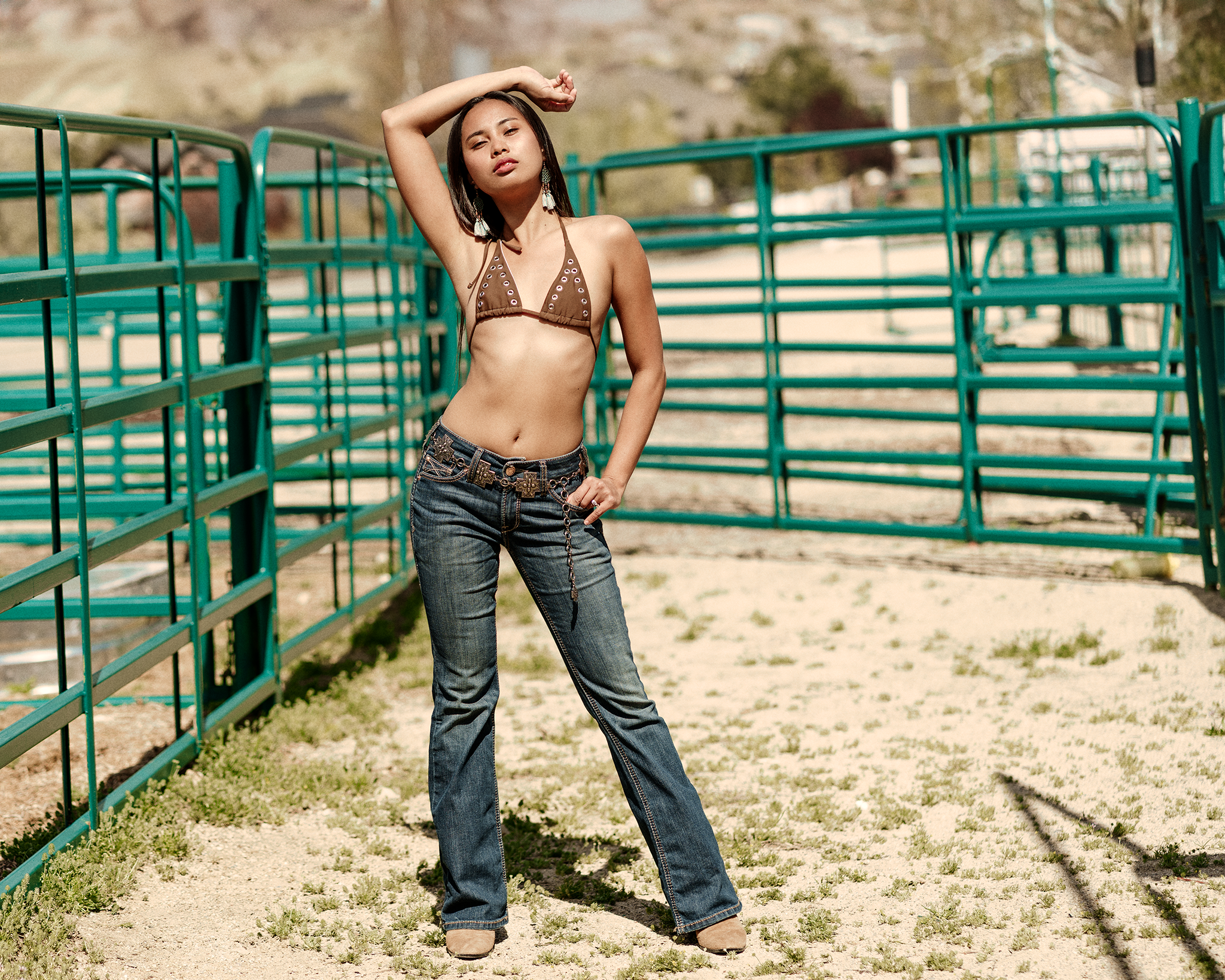
Pants, belt and dress sourced at The Boot Barn.

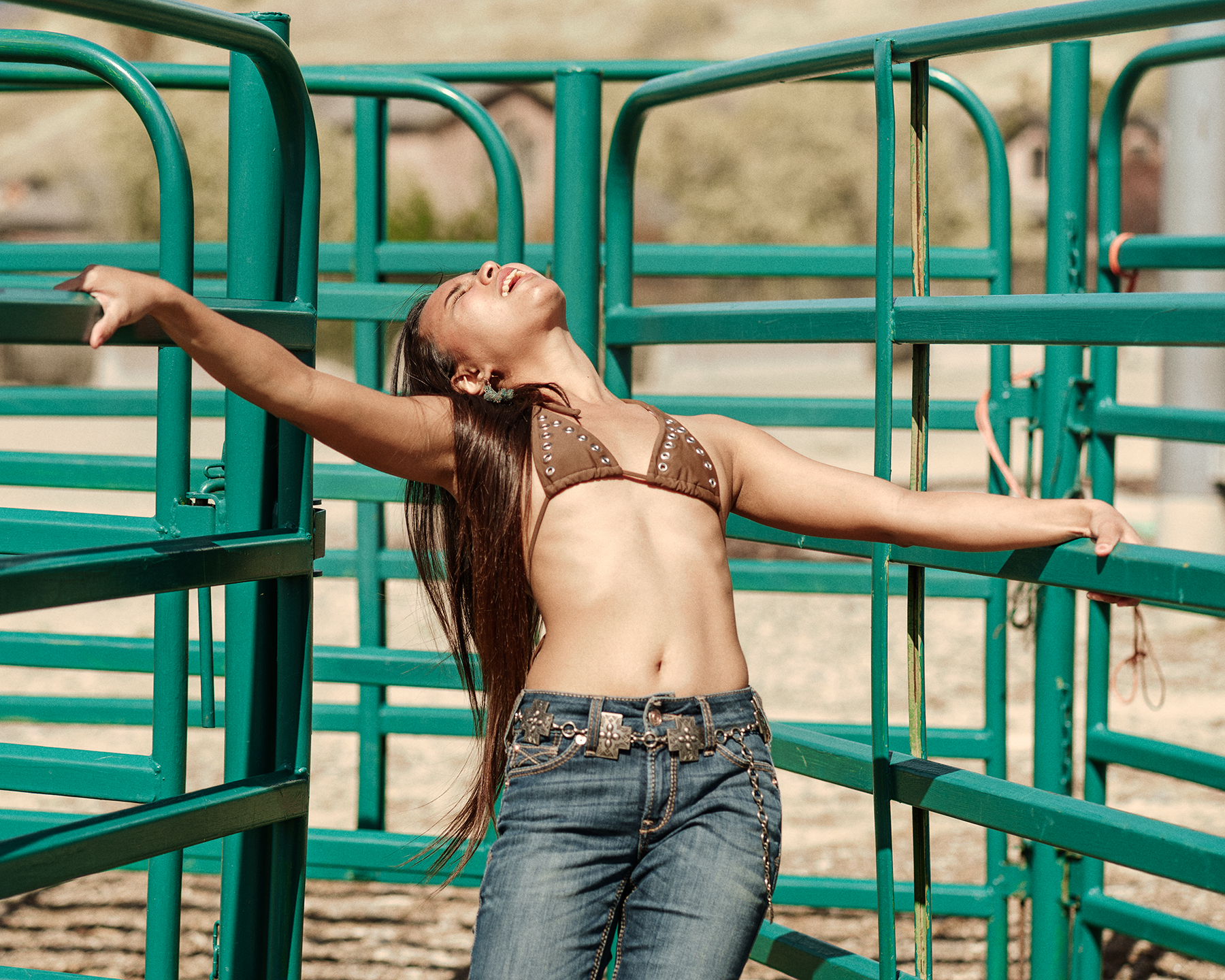
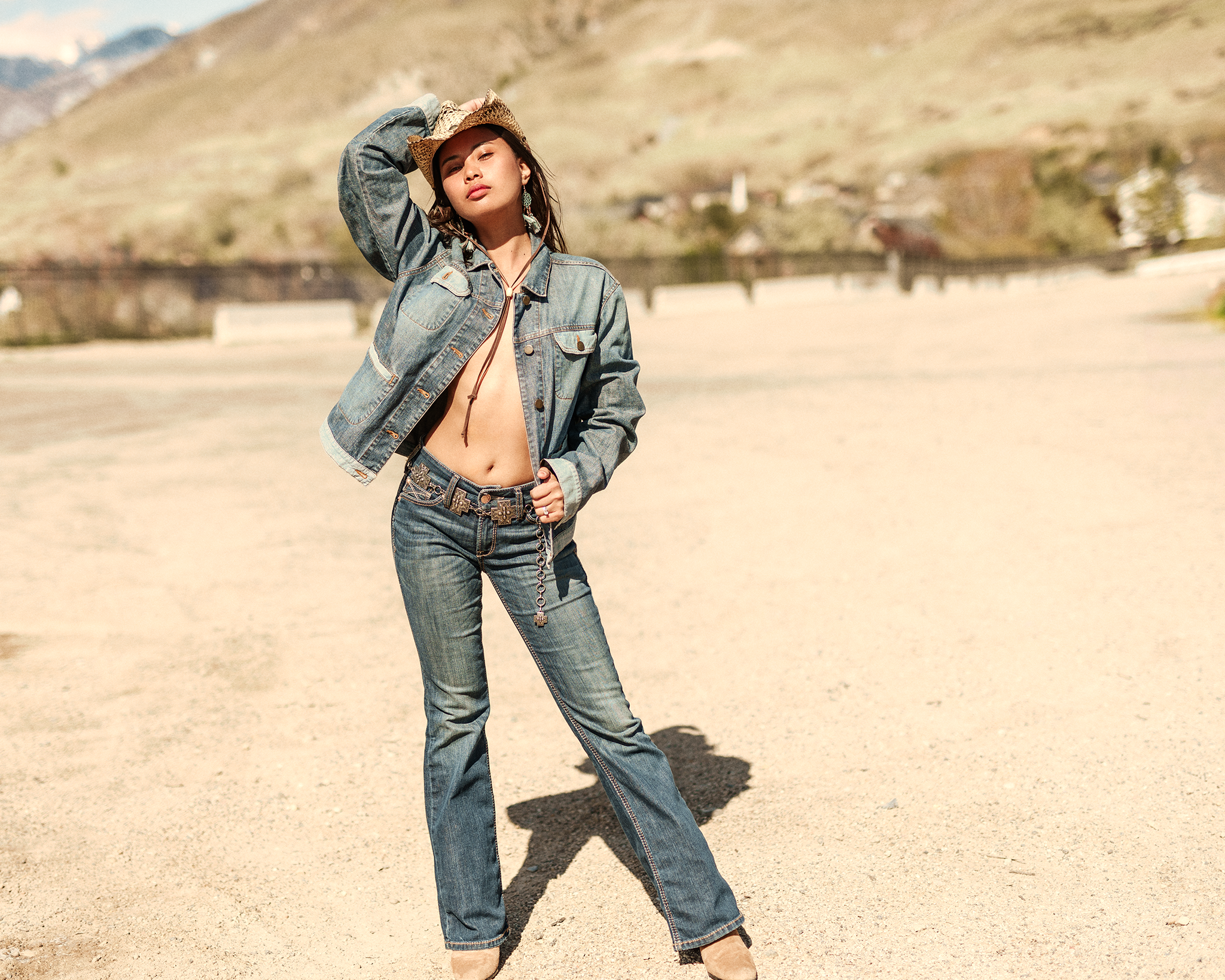
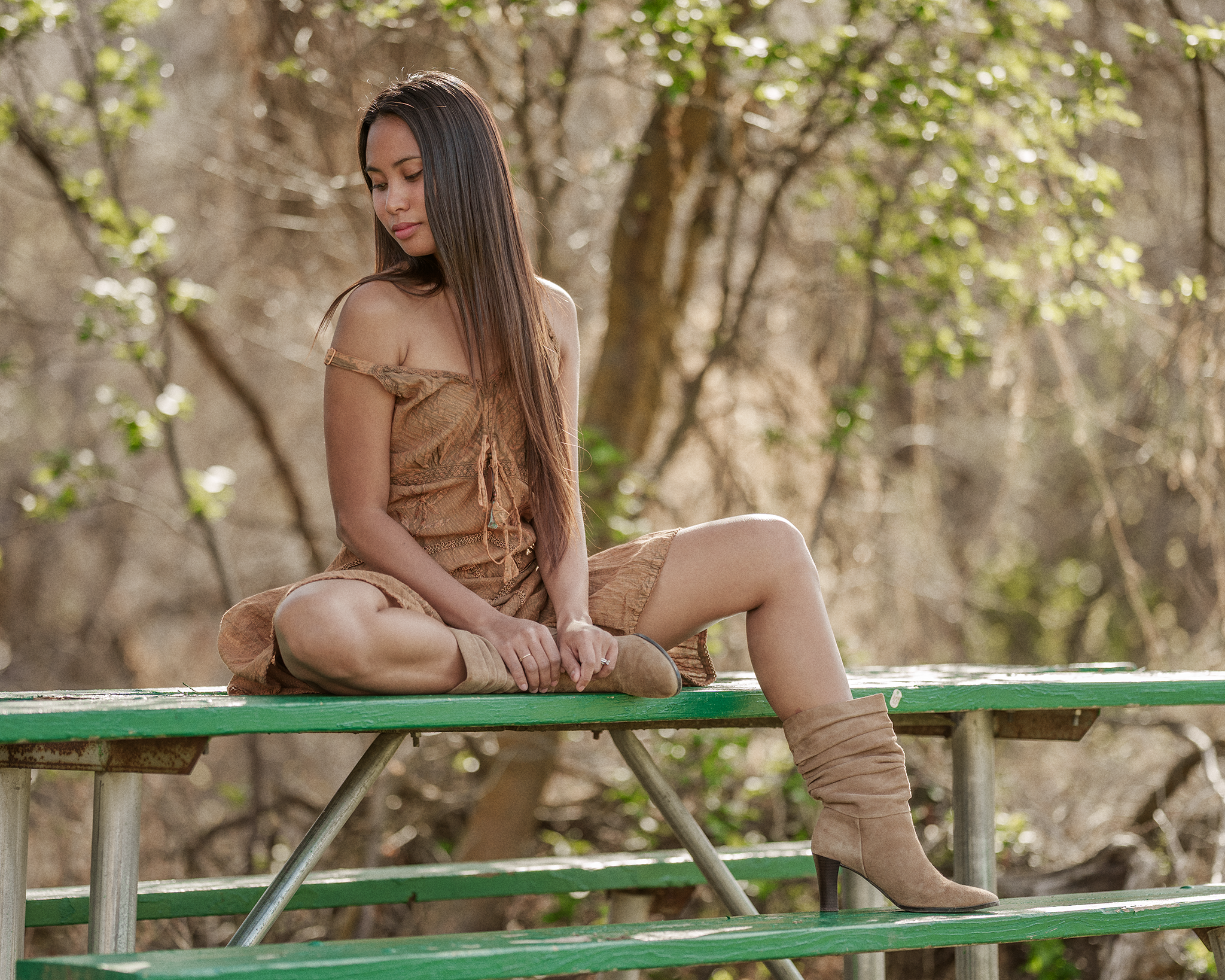
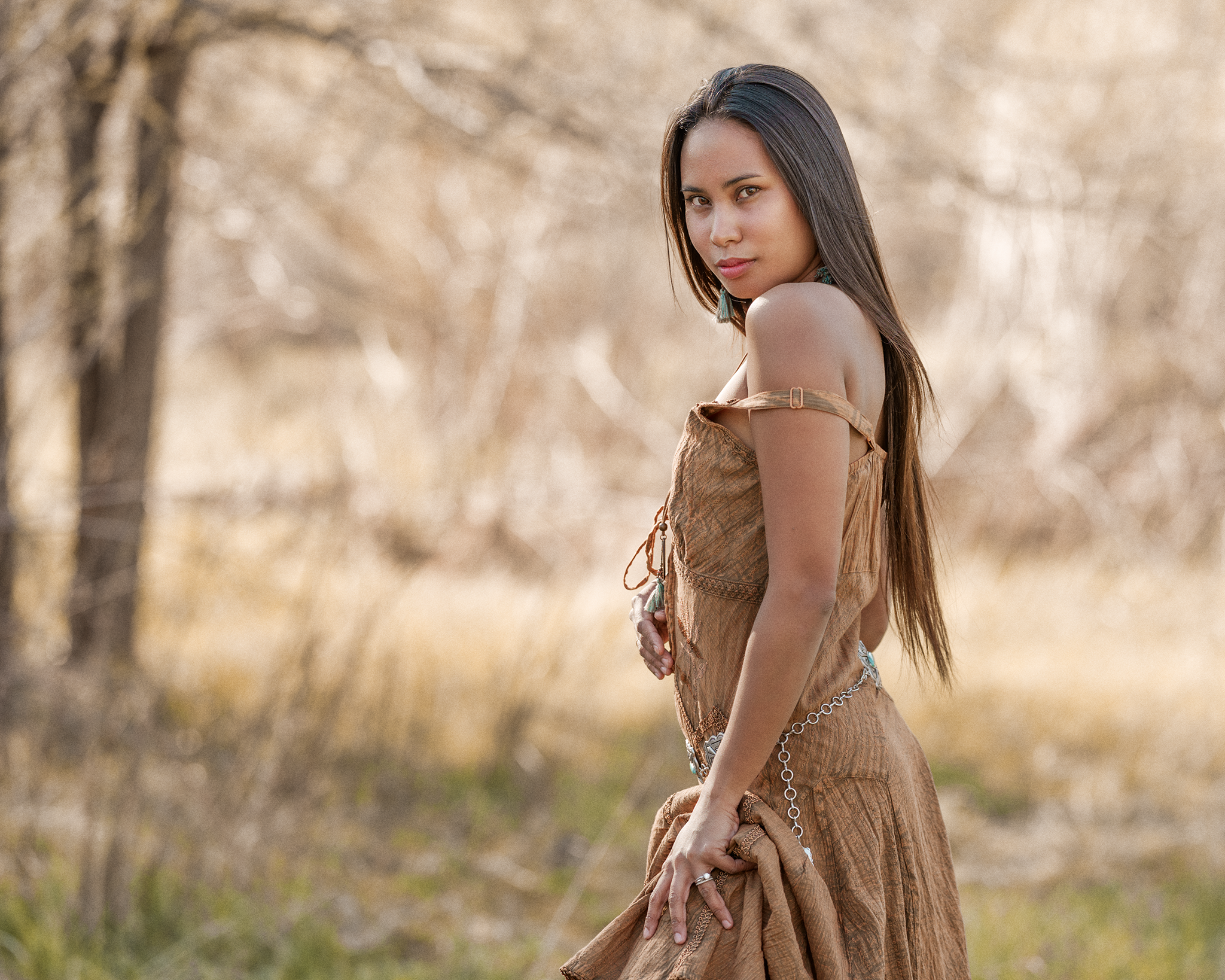
For a few years now I’ve been tinkering with the idea of a western themed fashion-ish editorial-ish project. This is one of the first shoots I did with this them formulated and a specific goal.
I call the project Backroads and Boots.
October, 2023.



The goal for summer, 2025, is to get as many of these in as possible.
One day in June, 2024.
An interesting aspect of these photos is how much the light changes and, more striking, how much it changes on Lorato’s skin as the day progresses.
This was a very quick, off the cuff, run and gun shoot that started about 4:00 PM in pretty hard sunlight, transitioned into the most golden of golden hour light, and finally into twilight as the sun dropped behind the mountains.
When I first started editing these photos I found myself fighting the tones as the sun got lower. What I mean by that is that as the sun neared the horizon, Lorato’s skin became more saturated with yellow and orange tones. Golden hour was gonna golden hour. I struggled with toning down the golden hues on her skin. Finally, I just thought to myself, why?
I finally decided to just embrace the tones produced by the changing light.
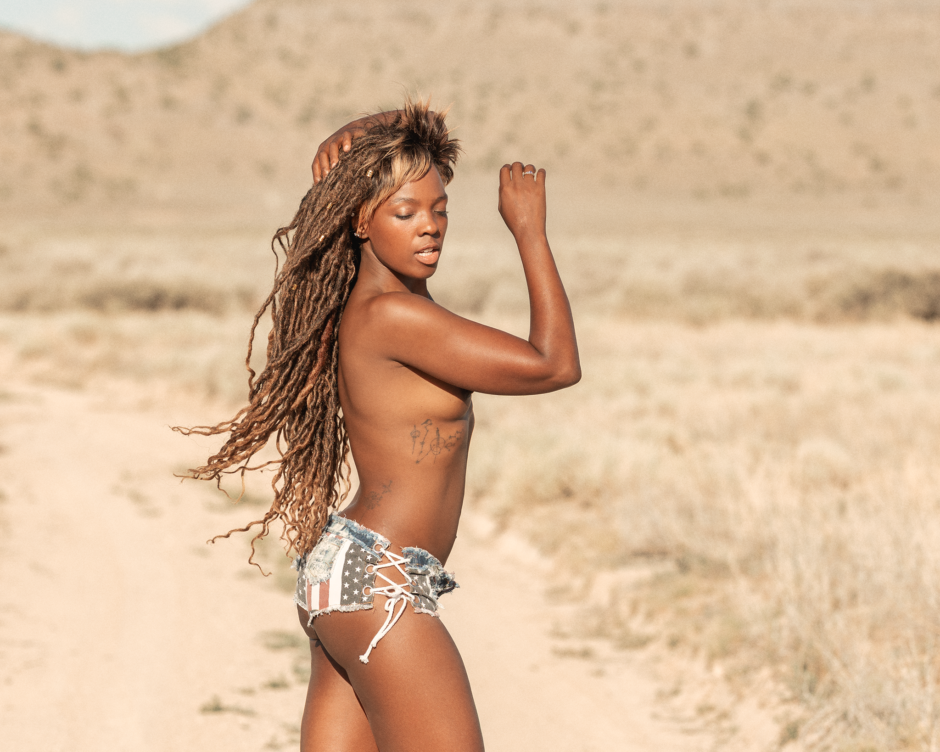
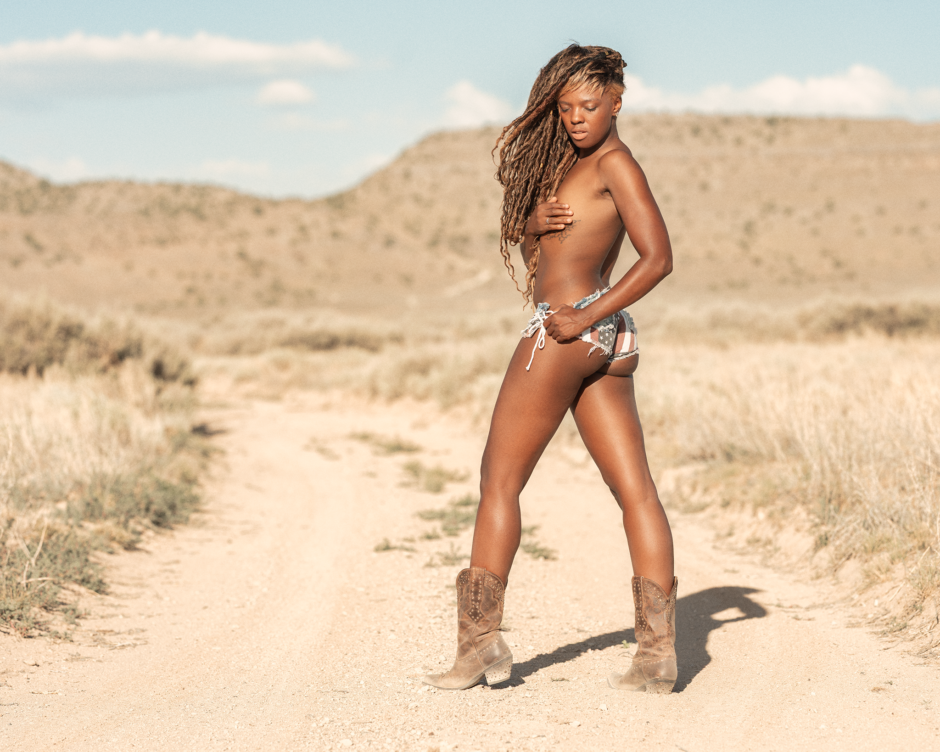
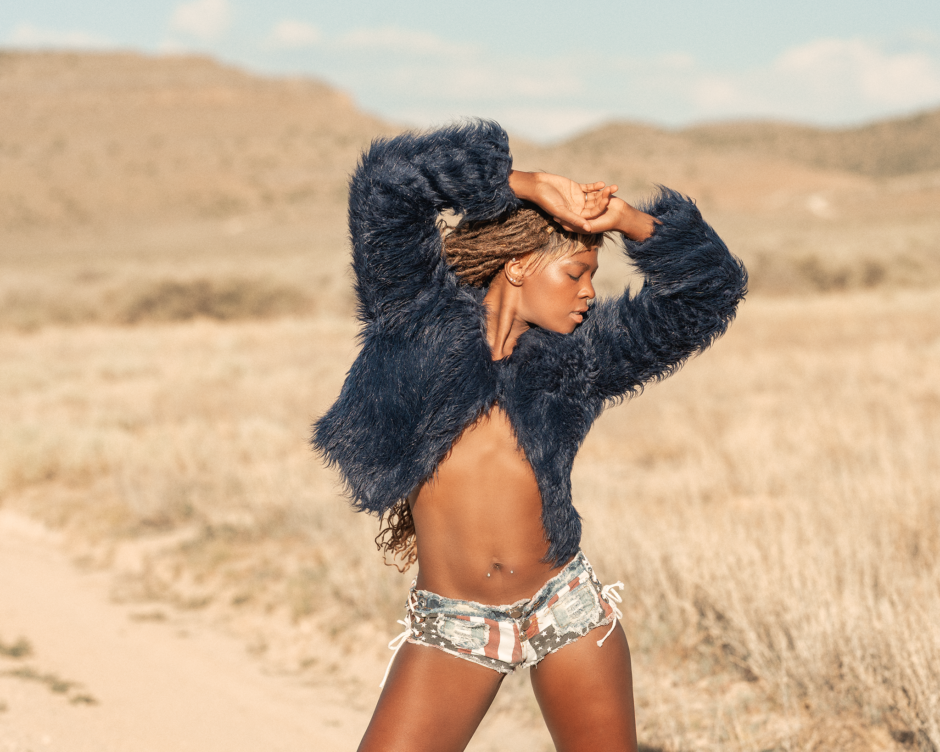
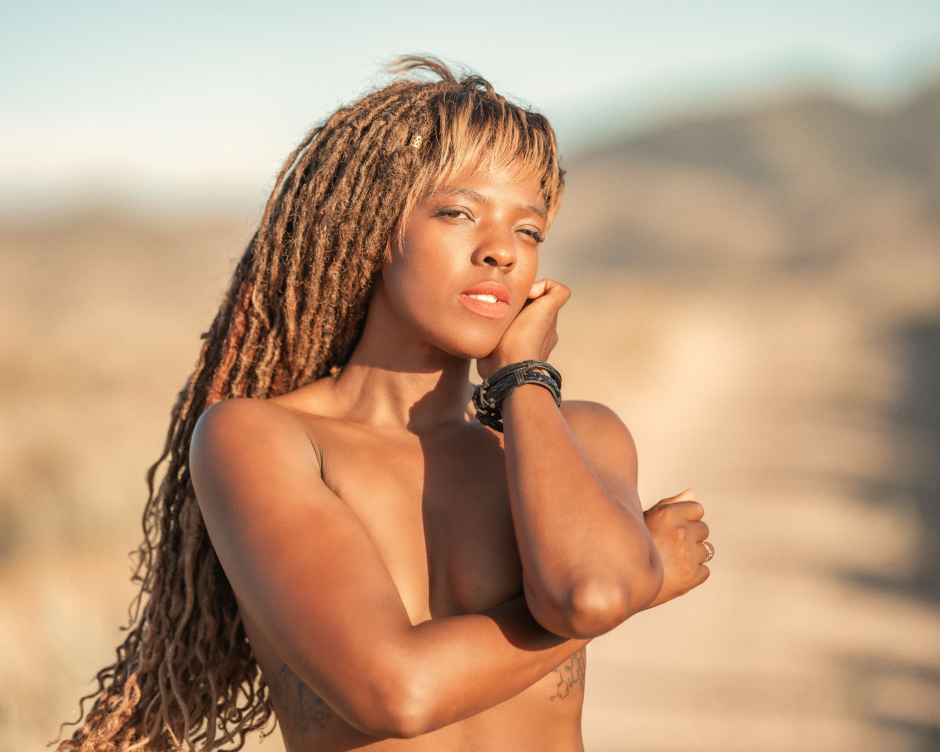
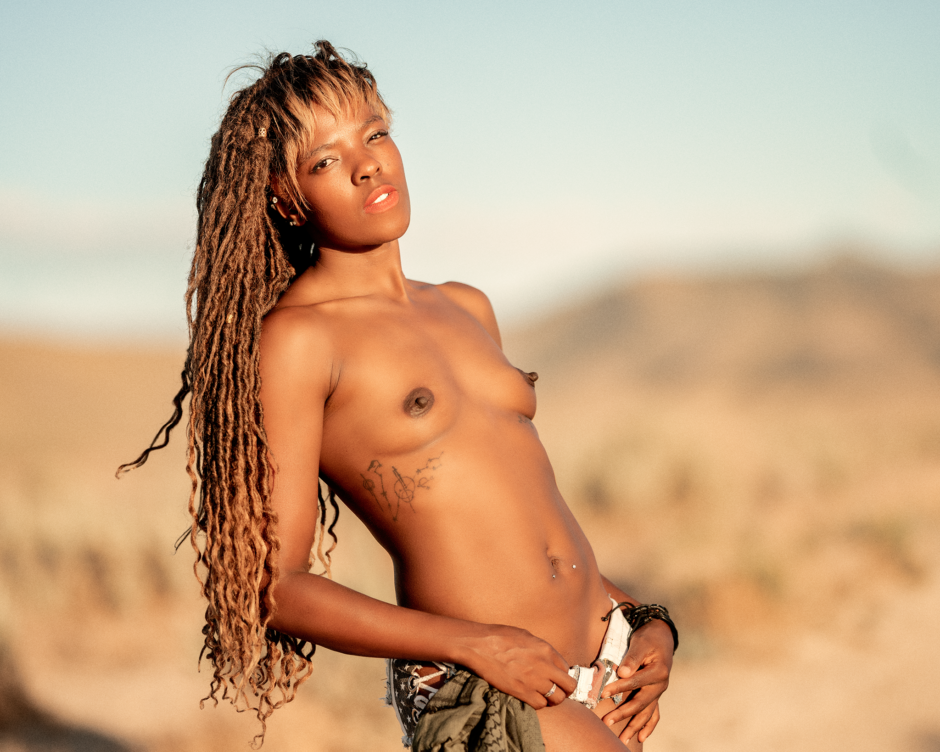
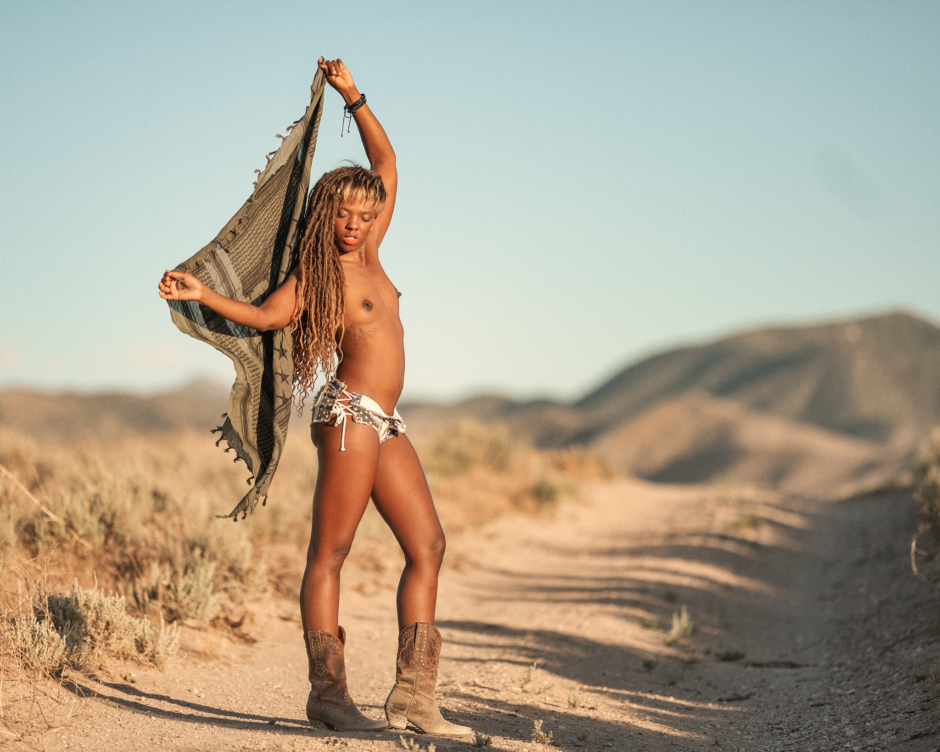
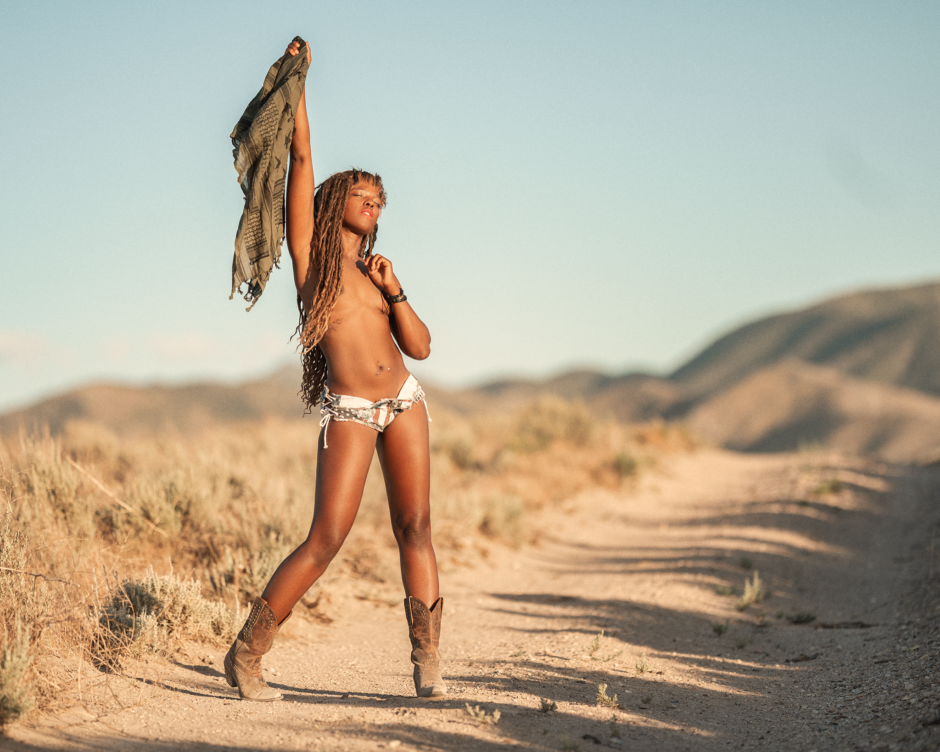
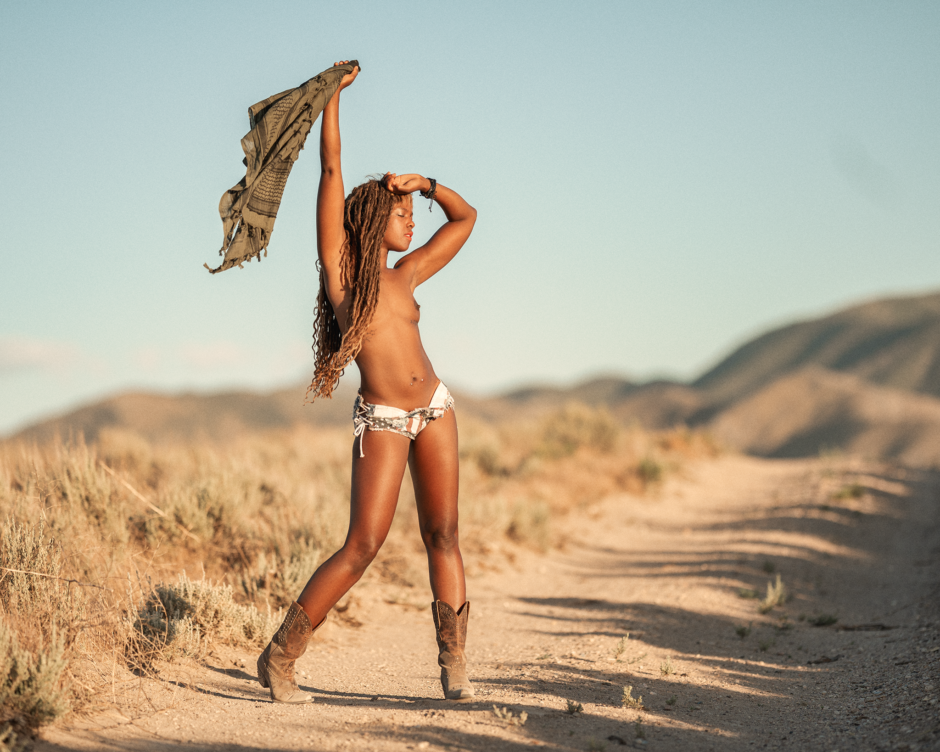
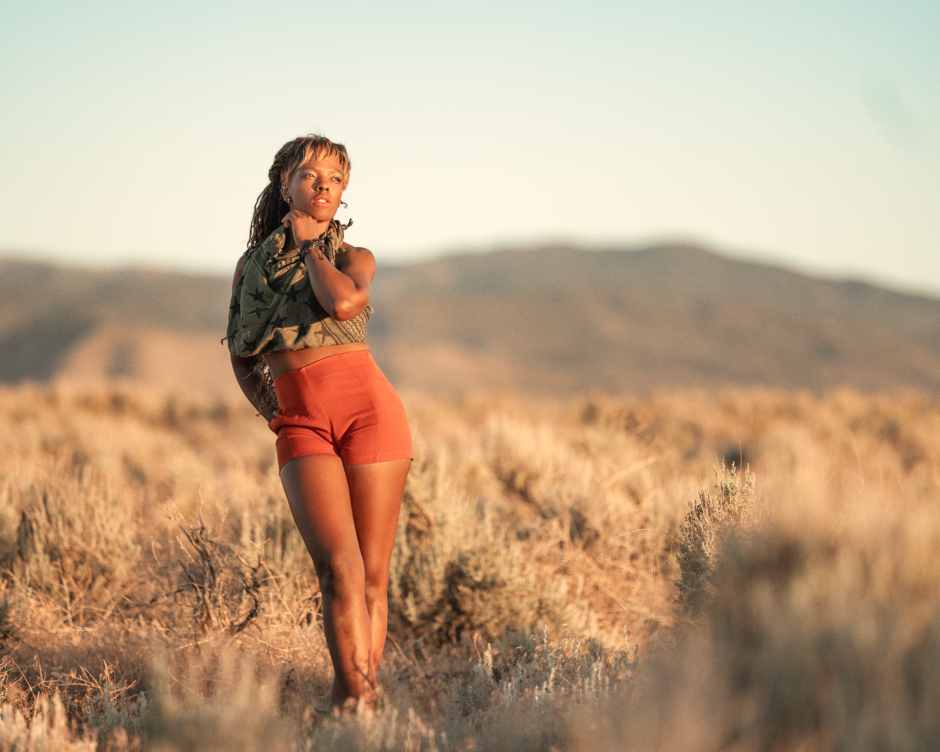
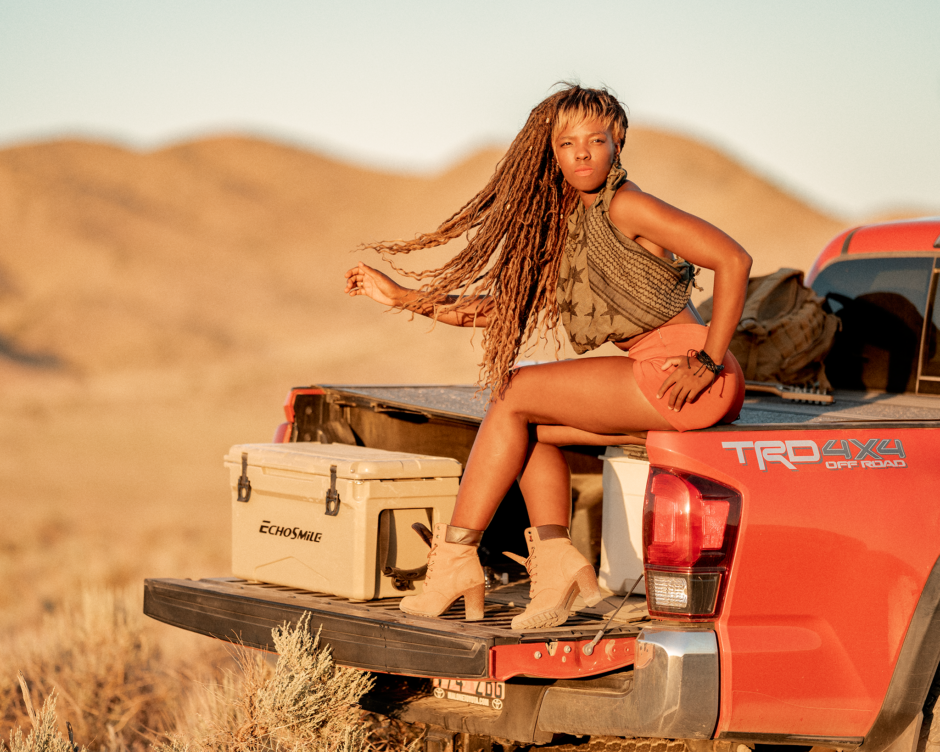
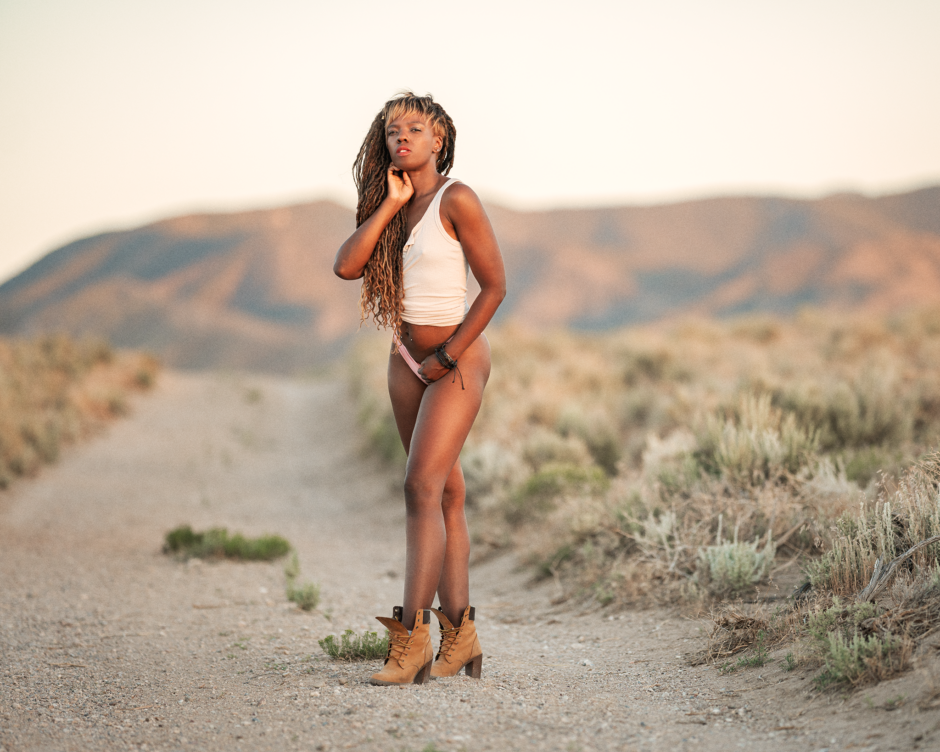
I’m not sure what this structure used to be, but it’s a great location for video portrait.
Give me a dusty dirt road, a desert landscape, a beautiful woman and a suitcase and I’m a happy photographer.
A video portrait of Kadance.
This Dusty Roads editorial with Shamir is a direct result that I very much dislike winter. In fact I spend all winter long waiting for summer. And then when the good weather is here I take a lot of pleasure in doing outdoor editorial fashion style shoots for no other reason than it’s fun.
Nah, I’m no fashion photographer. I’m just an enthusiast that receives much needed therapy by taking photos.
Shamir met me at my house in the morning, we had a cup of coffee, and then hit the road. The first stop was a great high desert location that overlooks a lake. Had to get a quick shot of Shamir admiring the view.
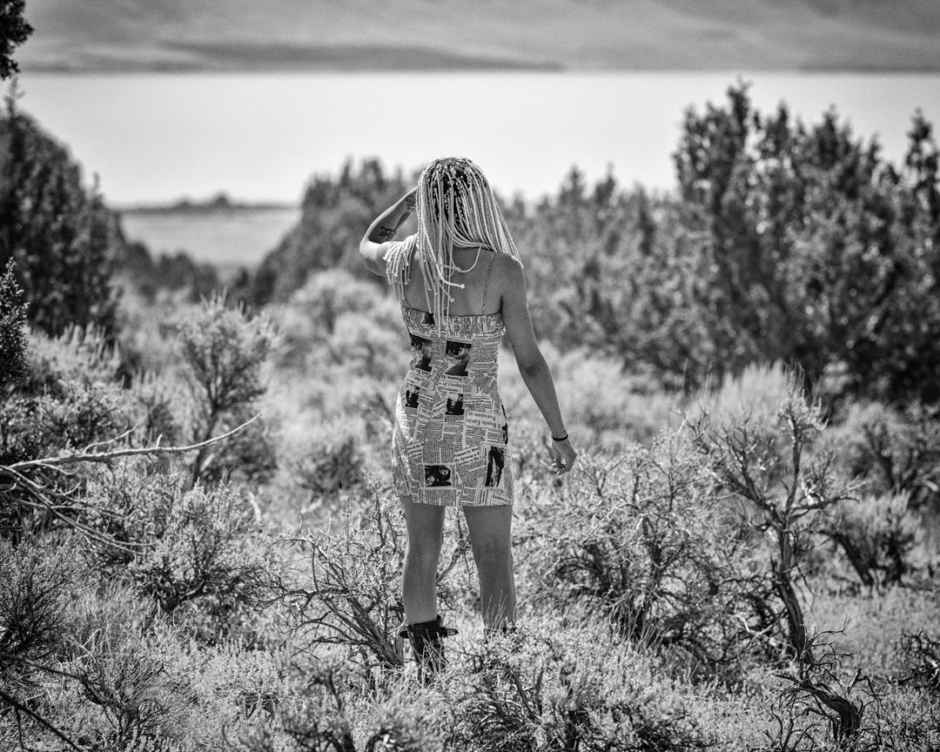
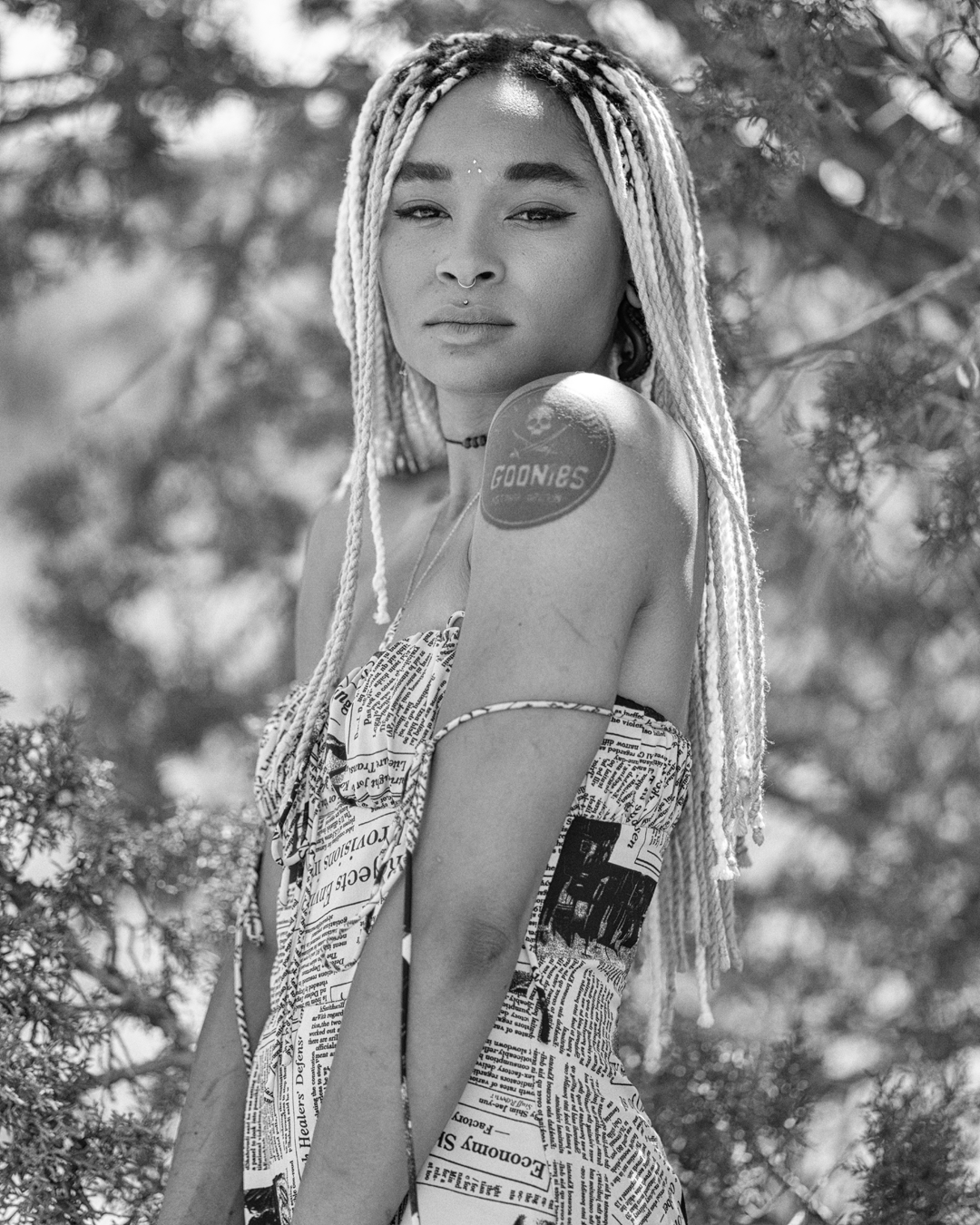
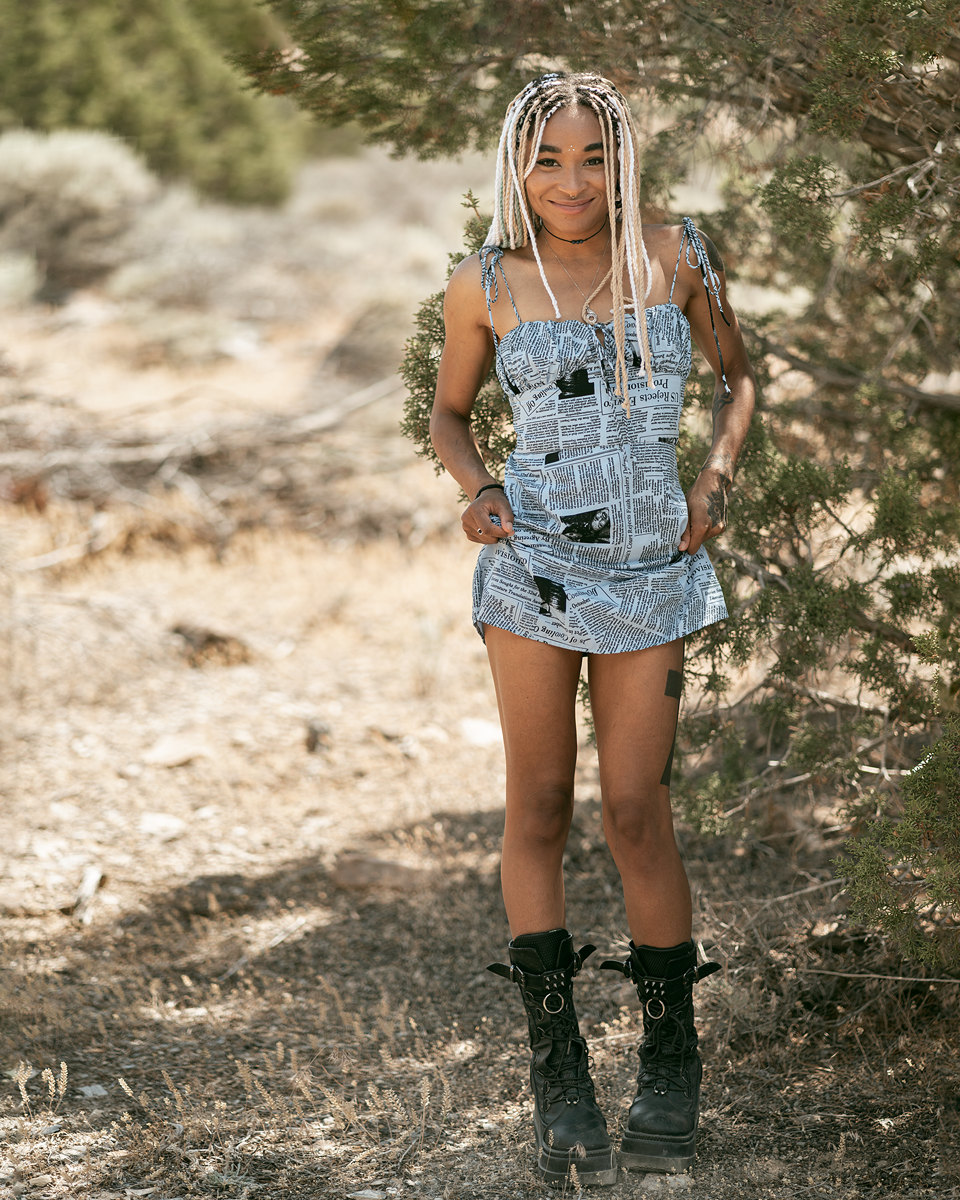
Shamir brought a bunch of different clothes, but I wanted to keep it in the realm of Shamir’s free spirit style; in other words, you wear what you want. A lot of what she decided to wear was a kind of amalgam of BoHo and goth? Not really sure, but I think it worked. She brought it all out and threw it on the hood of the truck and we just randomly grabbed some clothes and she put them on.
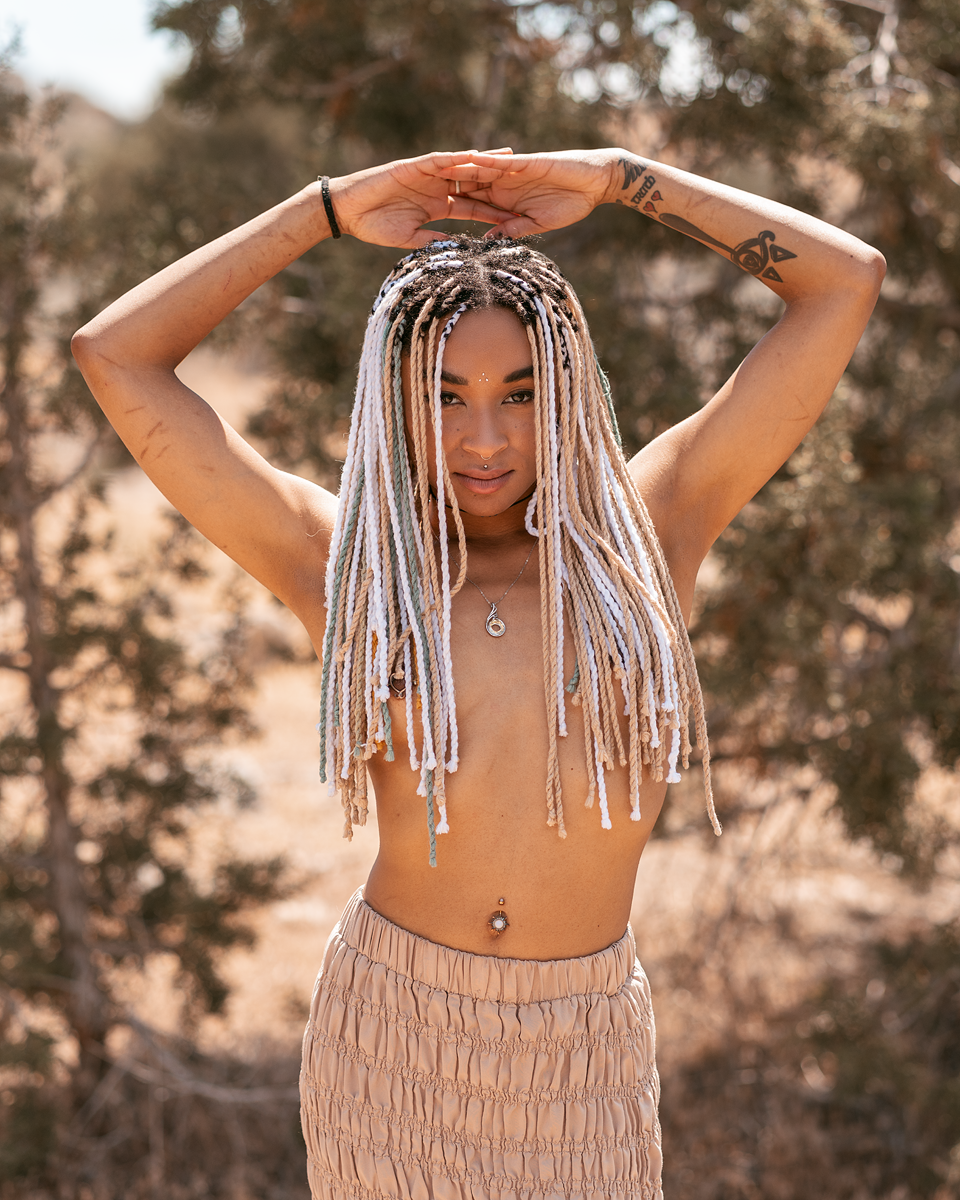
Amidst the junipers, bunchgrass, and high desert air everything seemed to fall into place. No method, just a little madness.
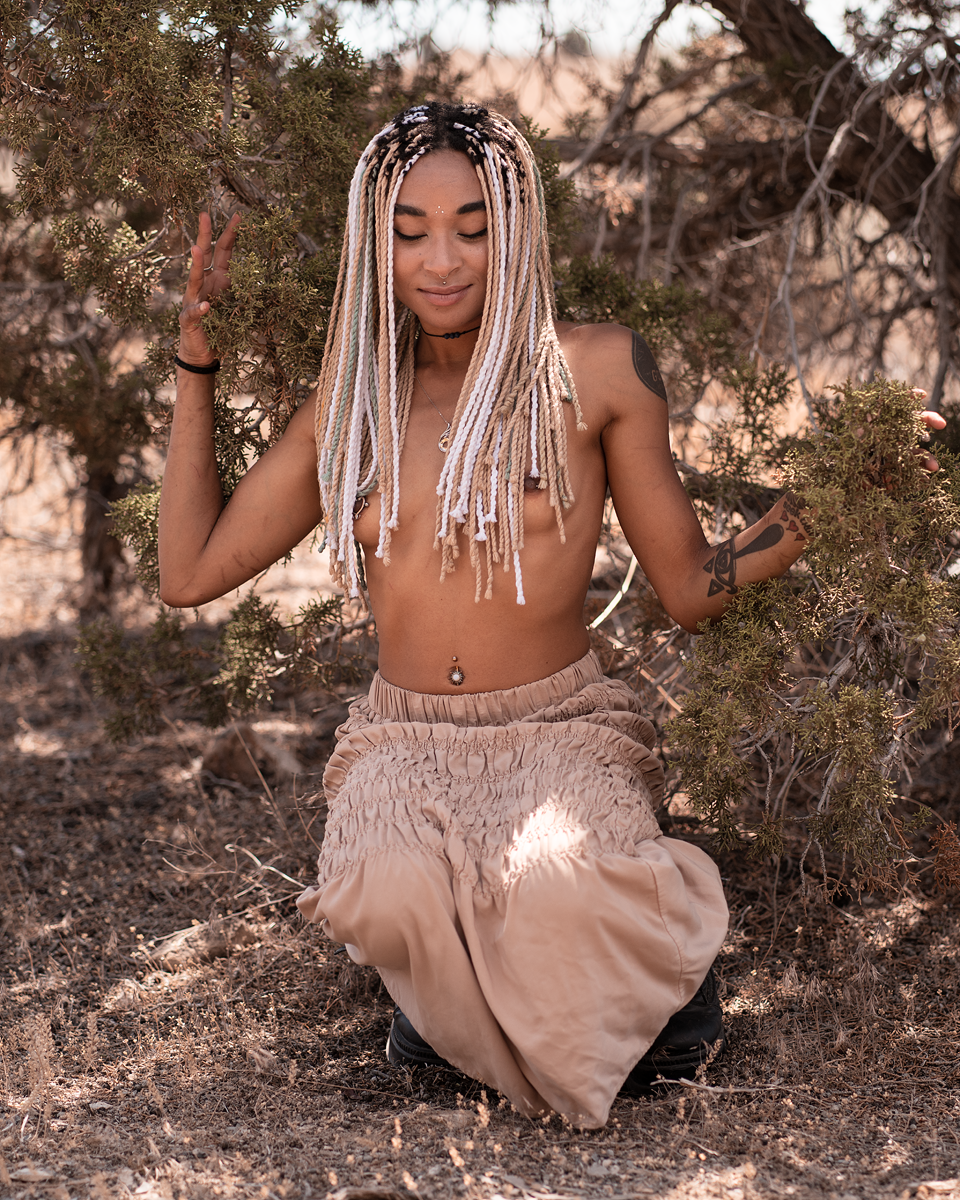
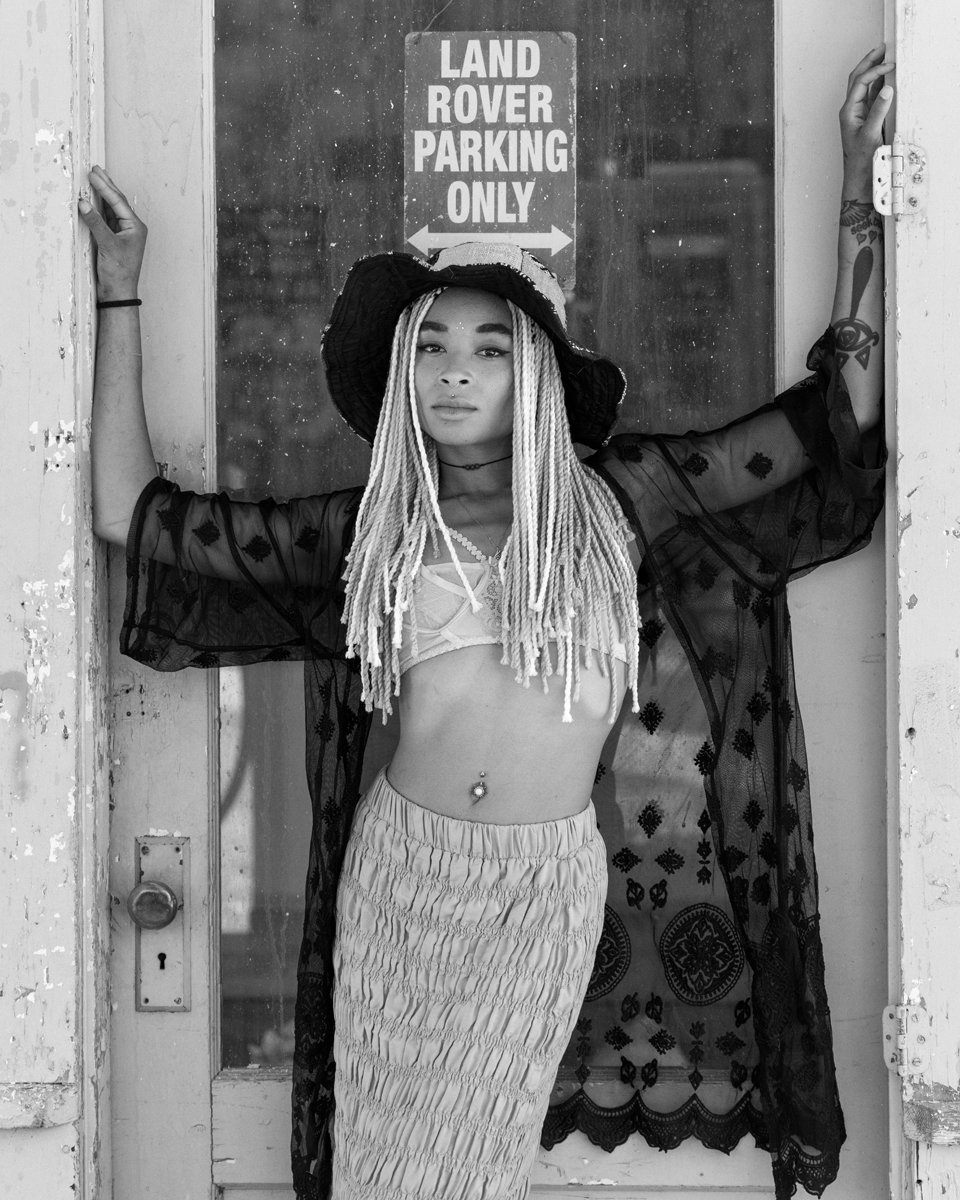
This old abandoned gas station is one of my favorite locations; especially at midday sun like it was here.
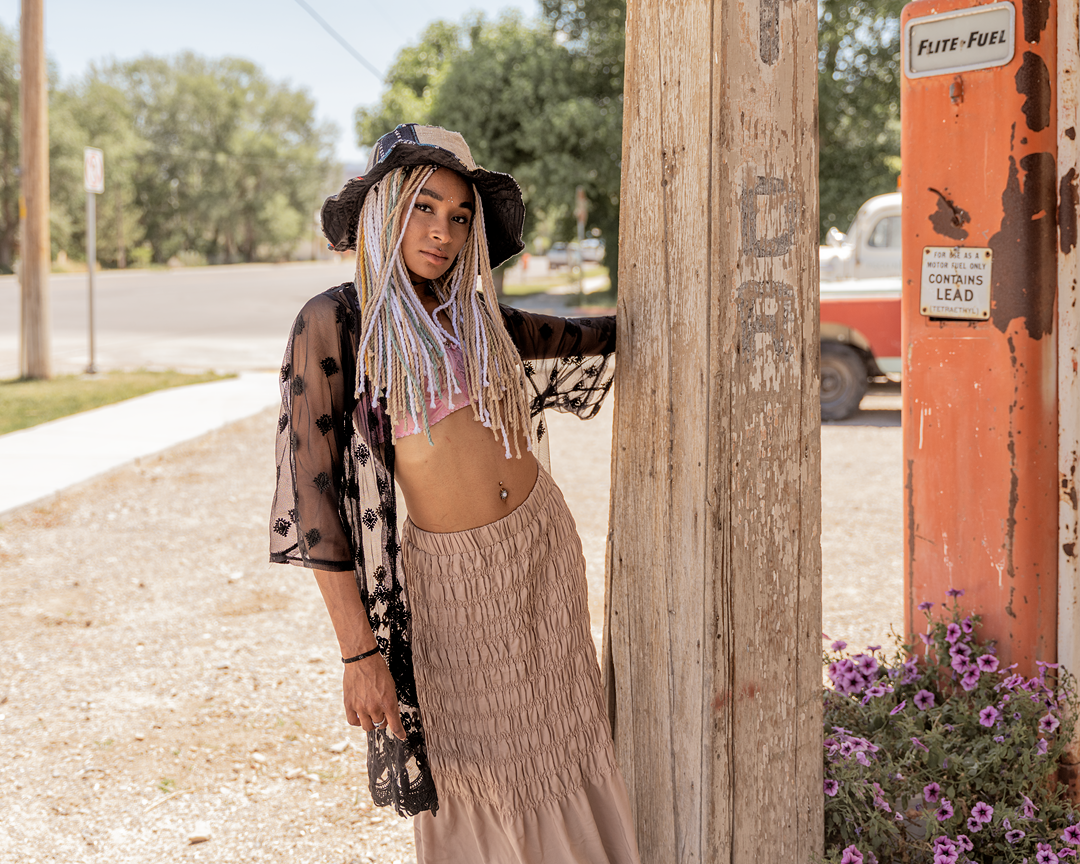
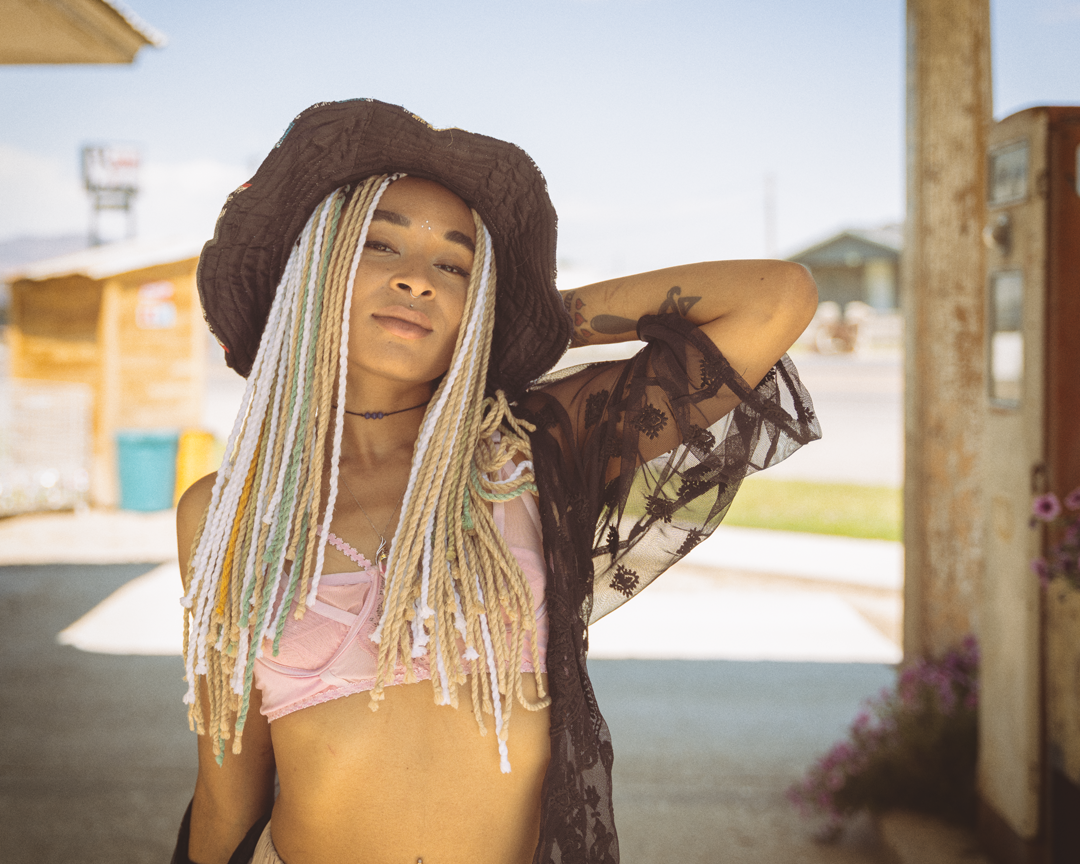
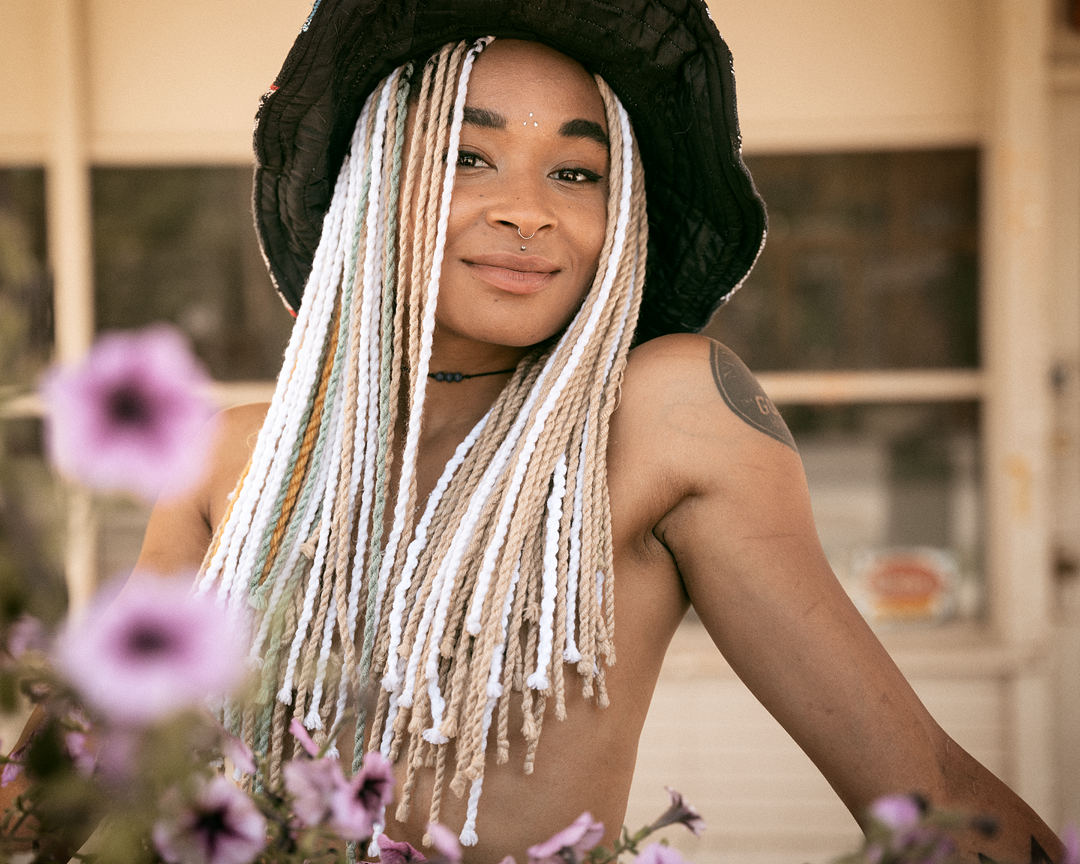
From the old gas station we continued up the road further into the desert. Out in this remote area there are many little nooks and crannies to simply pull over and make something happen. Like this little row of stairs between two old buildings.
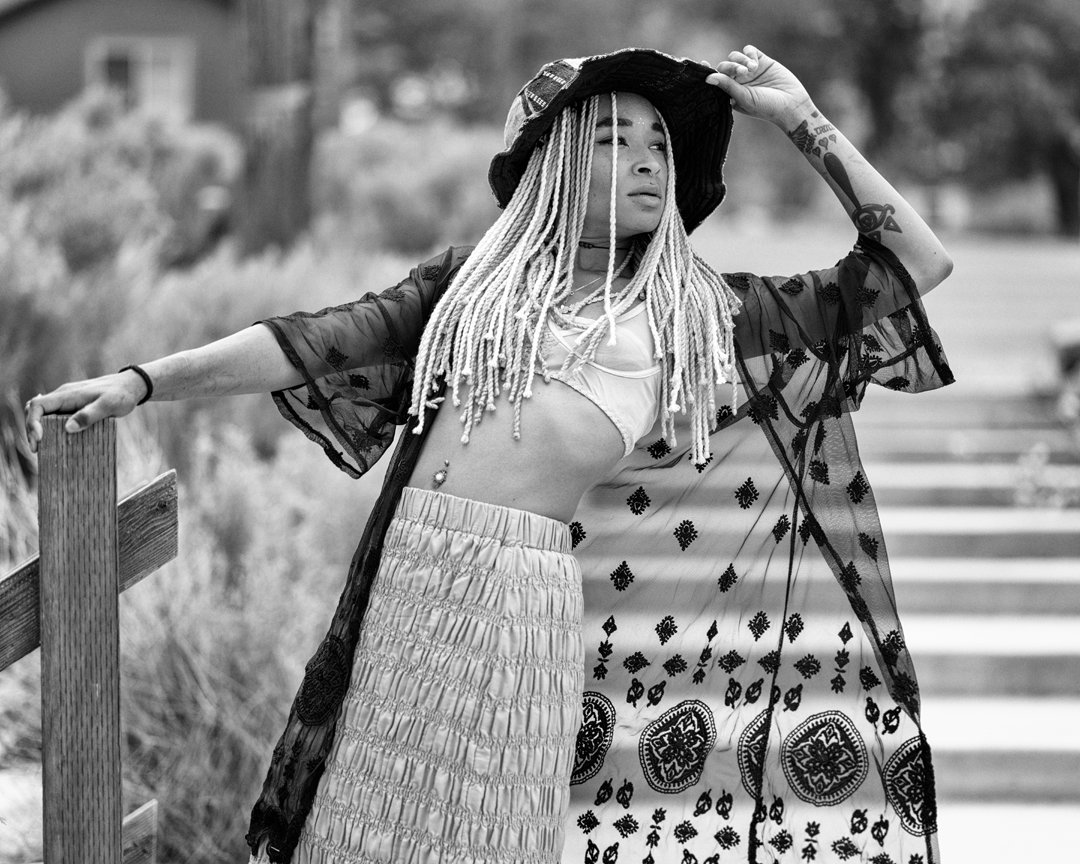
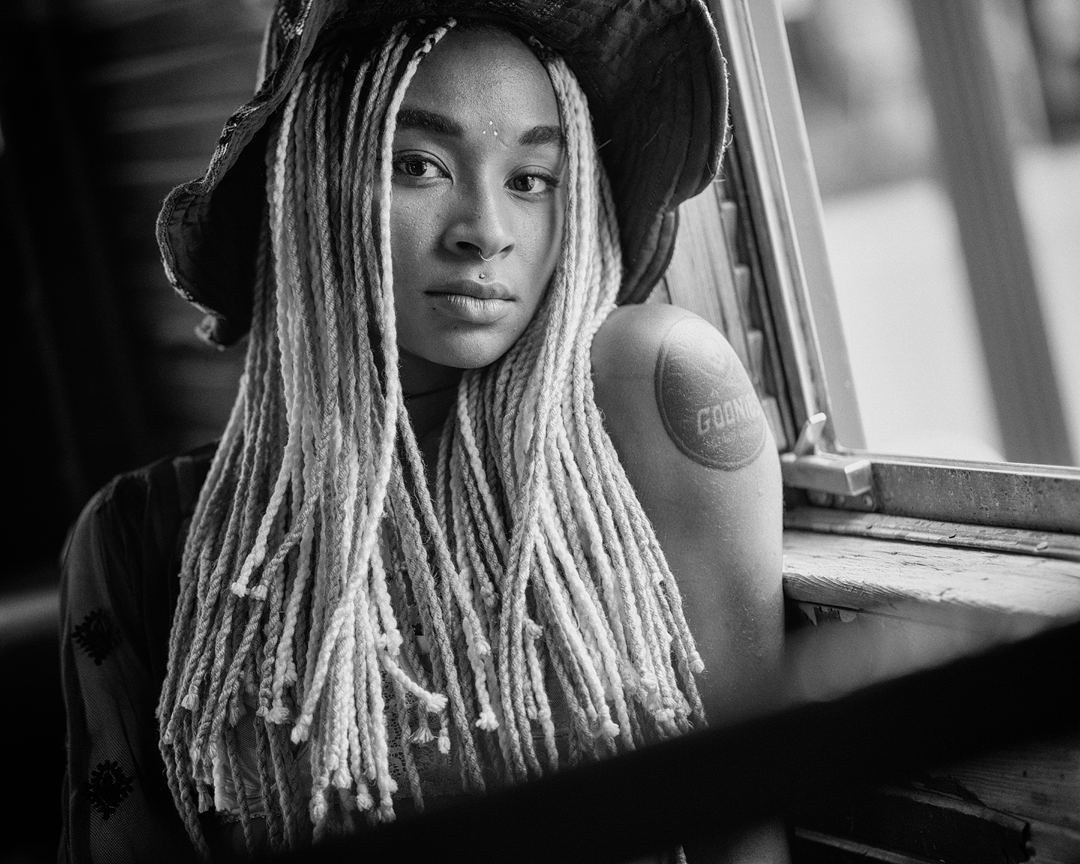
The West Desert has a long mining history going back over one hundred years. There are a lot of broken down buildings and trains. It’s not unusual to see an old passenger boxcar sitting off of the road in tiny out of the way towns.
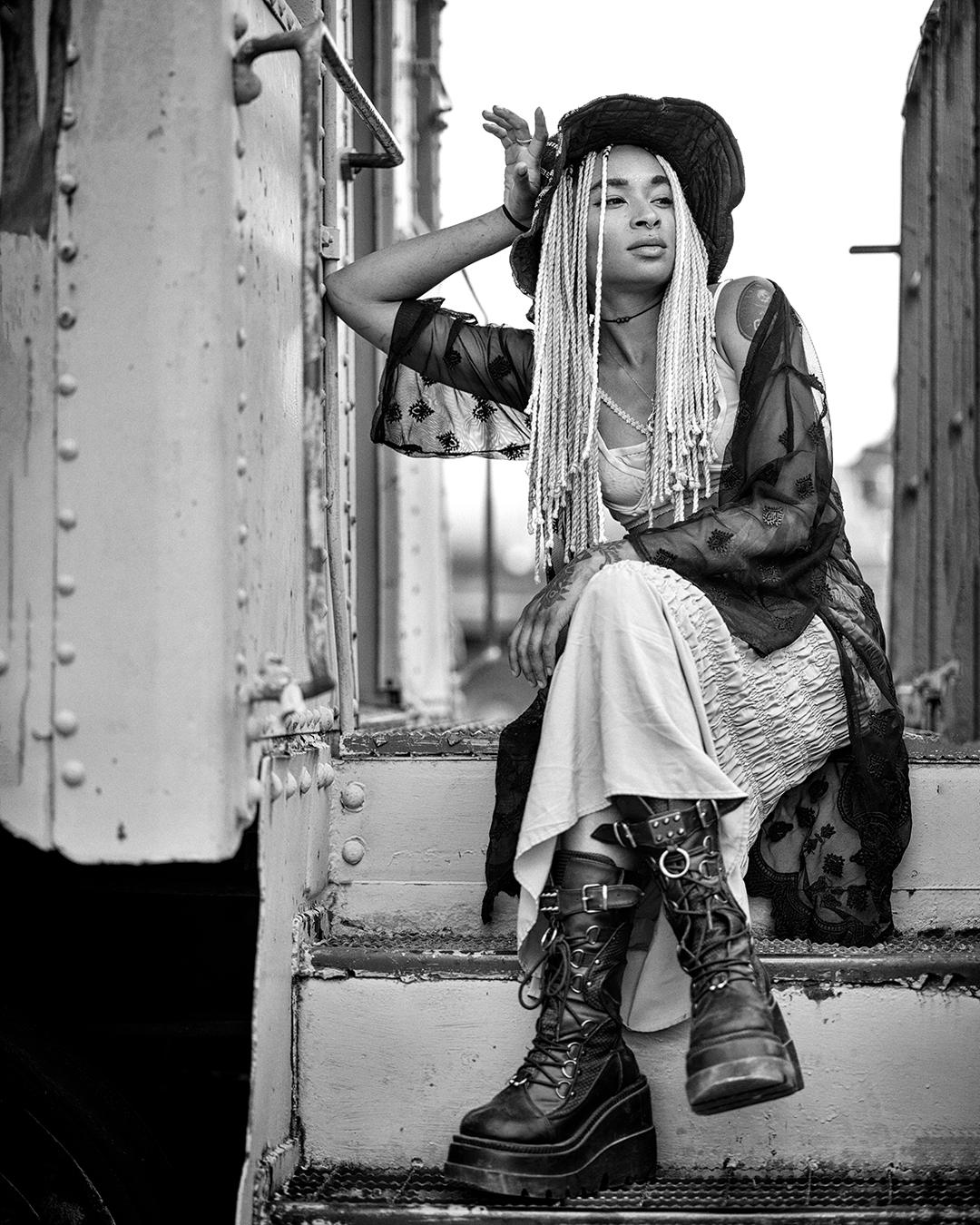
Once again we jumped in the truck and headed further west deep into desert country. On the drive Shamir intended to do a change, but couldn’t really find anything that she was feeling. The only thing that I really had a strong feeling about was the black cover that she had been wearing thus far.
Once we got to the location, however, she looked at the sand dunes and felt she had an inspiration of exactly what she wanted to do. We sat in the truck for a few minutes and drank a lot of water, and then set out into the barren landscape.
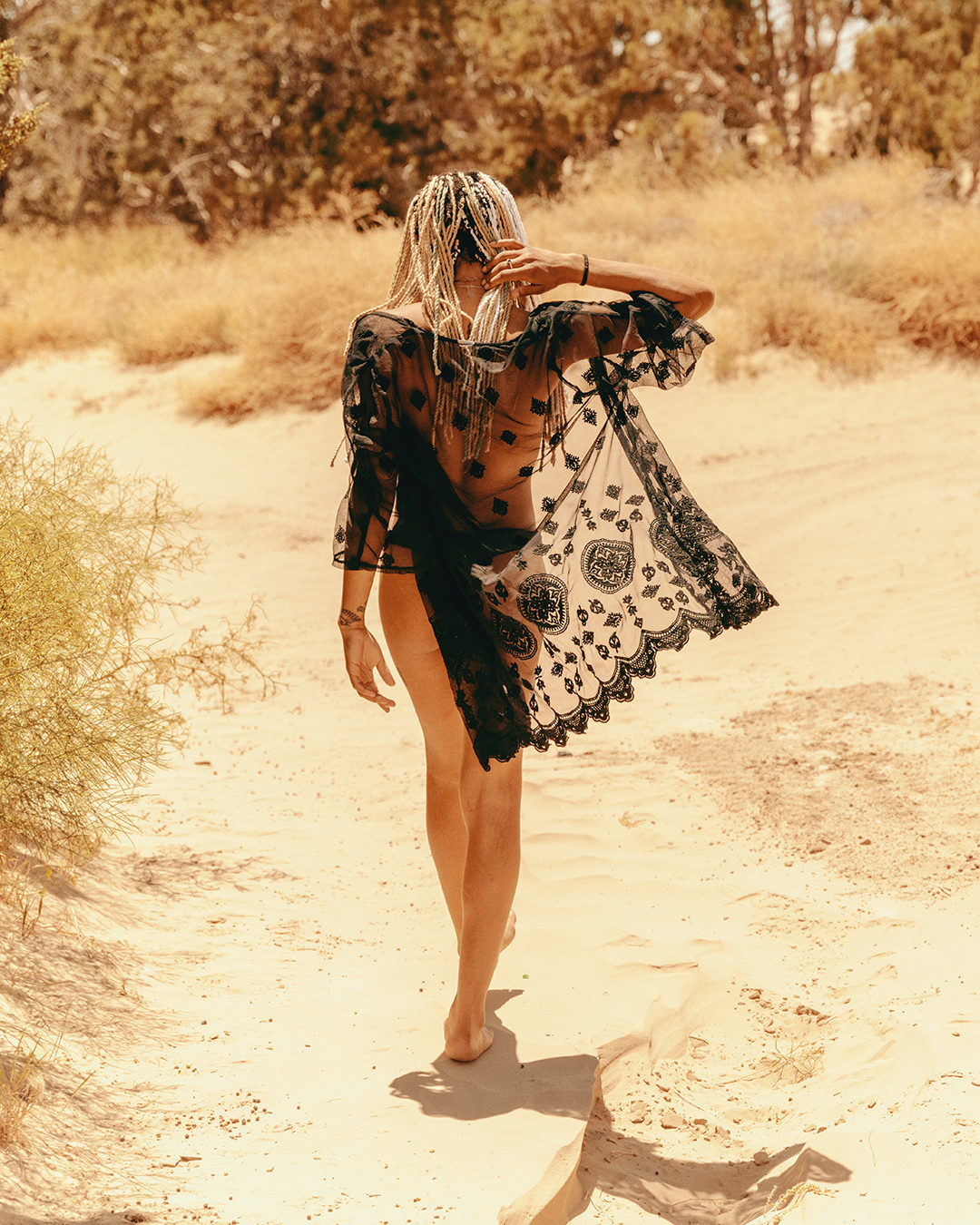
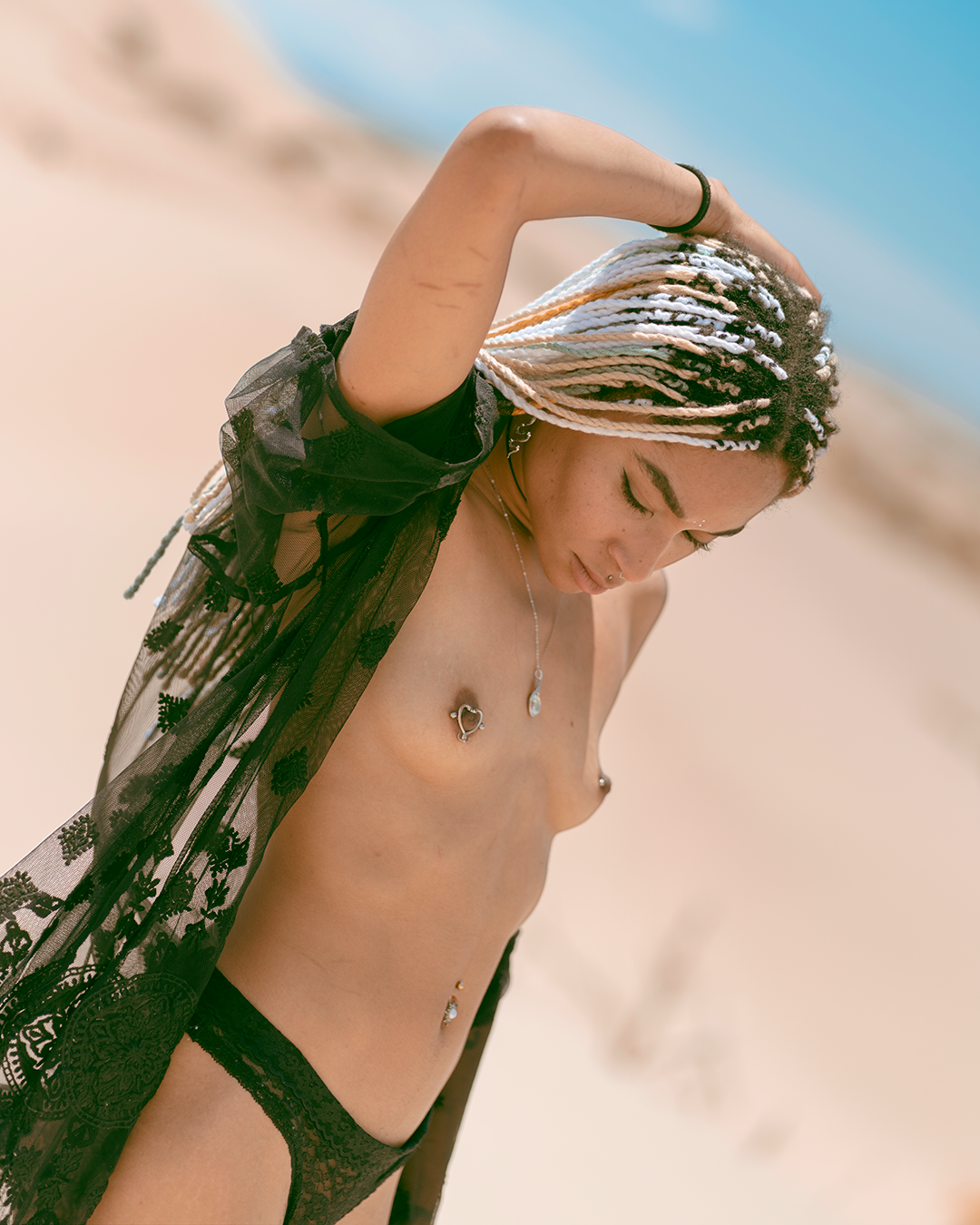
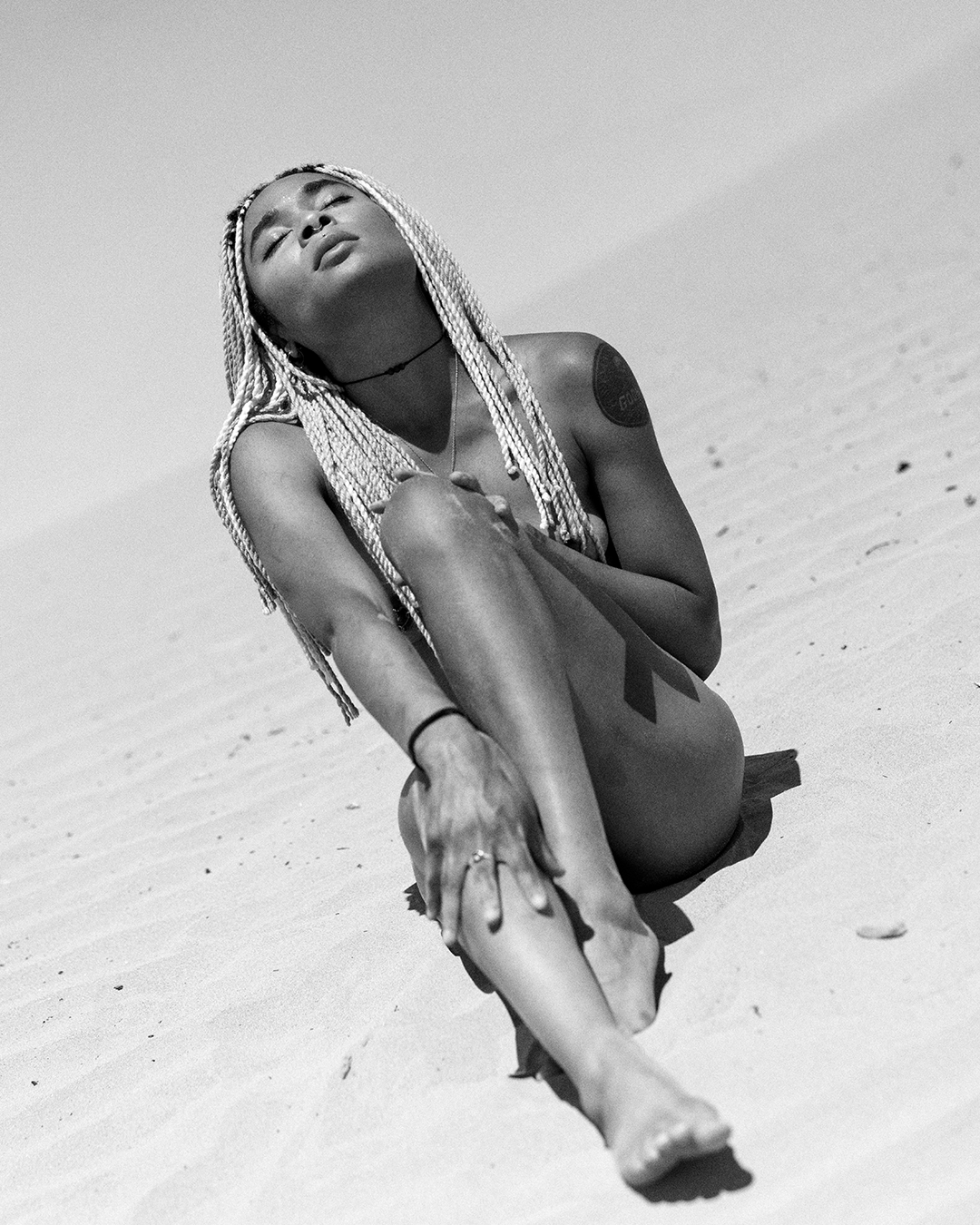
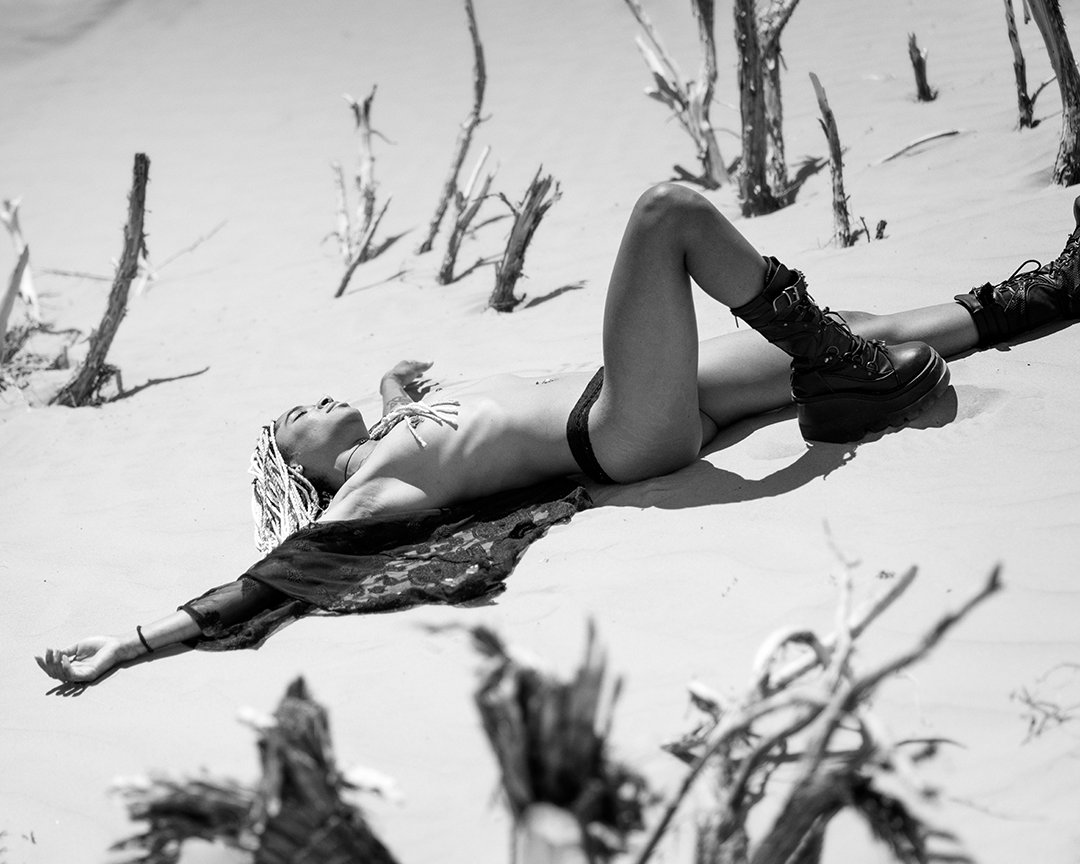
It was time to head back to civilization so we walked back to the truck, pointed it east and drove.
Model: Shamir
Equipment used: Sony Alpha 7R IV, Sony 135mm F1.8 GM, Sony 85mm F1.8, Sigma 24-70mm F2.8 DG
All images © Daniel Medley – 2023
As a photographer of people it can be difficult to develop your own style. It’s one of the questions I see often on the various groups or forums that I visit. It’s something that I’ve thought a lot about and I’ve actually come up with a way that works for me and I’ve implemented it. Keep in mind that it’s simply just my opinion. Though I’m primarily a people photographer I don’t see why it wouldn’t work in some other genres. Though it’s something that I think has worked for me, your mileage may vary. Also keep in mind that I’m coming from the perspective of an artistic people photographer. Sure, if your gig is pumping out hundreds of corporate headshots there are certainly conventions you’re going to need to adhere to. But that’s different. If someone is striving for their “own style” photographing people, they’re not hanging out a corporate headshot shingle.
I know that it’s anathema to not reach out for criticism or “help” from other photographers, but I really think it’s the worst thing to do when it comes to aesthetic. One of the things that new photographers are told that they need to do to “get better” is to seek the aesthetic advice of other photographers. It’s an example of conventional wisdom that is just wrong. Don’t put up a photo in a public space and ask for criticisms or advice. Also, unfortunately, the world of photography is full of people who are more than happy to take it upon themselves to give you their unsolicited aesthetic opinions; something that has always baffled me.
Aesthetic–indeed art–is entirely subjective. Yes, I know there are those who have wasted a lot of money on an art degree of one kind or another who will argue with that, but it’s the truth. What may be visually appealing to one person can be trash to another.
I’m not saying that you shouldn’t reach out to other photographers for technical advice. New photographers should definitely do that. For example instead of just posting a photo and asking for blanket advice, you’re far better off, say, posting it and stating what your goal was; lighting, editing, etc. and asking for advice on where it was missed and how to achieve it. But in order to do that you need to first know what your goal is.
This is a common trap that many new photographers fall into. They try to achieve a personal style through editing. Some will spend money on Lightroom presets with that goal in mind and there are a lot of people out there that are willing to oblige them. One’s personal style is mostly created with how they take a photo. How they edit it has little if any bearing on the style. It’s why you can look at a Peter Lindbergh photo that is black and white and look at another that is color and you can tell that both are a Peter Lindbergh photo. Sure, a photographer may have an editing style that they have a propensity to use, but that is not what identifies their style.
Some photographers who are well known for their style don’t even edit their own photos. They hire it out. The editing styles of their photos may have changed over the years, but their style is still evident.
As an artistic people photographer there are no rules. This kind of goes back to the don’t listen to other photographers point I mentioned above. Some of the most annoying rules to me are the compositional rules or the cropping rules. Nothing gets ravaged more in a public forum than a photo that is cropped in the middle of an arm or leg, or at the top of the head. People hung up on these things are just silly.
Some of the most iconic artistic people photos violate all kinds of rules and would be savaged on your typical photographer’s forum. Some of the most amazing fashion photos have crops that would make a rules centric photographer loose their minds.
Again, don’t worry about rules. At all. Focus on making photos that YOU love and ignore the opinions of other photographers.
OK, I’ve bloviated on my opinion on various things, but how exactly do you go about working on developing your own personal photographic style?
Here is my approach:
Create a folder on your computer and name it whatever you want. This folder is going to be with you forever. As you peruse the internet in your everyday life, anytime you come across a photo that you love, simply save it to that folder. Don’t think about it too much. If you dig the photo, save it. It doesn’t matter where you find it; Facebook, Twitter, Instagram, fashion website, news website, forum, etc. It doesn’t matter where you come across the photos. If you really like it, just save it to that folder. But it’s important that you only save the photos that you really like; that really hit a nerve.
After some time–days, weeks, months–you will accumulate a lot of photos in the folder. When you open the folder you will see many photos that you’ve accumulated that you love. There will likely be a variety of different photos consisting of different types of people and editing, styles. It doesn’t matter. Though you may not be able to identify it at first, there will be a common thread throughout all of the photos. It may take some time to actually identify it. But trust me, there is a common thread. There has to be because all of the photos in the folder are there as a result of your personal aesthetic. There is only one you on a planet of 8 billion people. If all 8 billion people created their own folder of their favorite images there would be 8 billion distinctly different folders.
You will need to spend a fair amount of time in the folder looking at the images that you love. Eventually you’re going to realize the common thread. You may not be able to verbalize it, but you’ll know it when you see it. And when you create your own photos you’ll think of it. Make the photos that YOU love for your own reasons.
In time take some of your favorite photos that you’ve made and stick them in the folder. How do they hold up? It’s likely that initially, they won’t hold up in comparison to the other photos. If they don’t, then remove them. But it’s good to see how they stand up amidst all of the other photos that you love.
Eventually you will make some photos that absolutely hold their own according to your aesthetic. Even though they may look wildly different than many if not most of the photos in the folder, they will still ride on that common thread that runs through all of them. That thread is YOUR style.
I started this approach a few years ago and my folder contains many hundreds of images and I’m still adding to it.
Some time ago, during the waning days of summer, Inna and I spent a day wandering the mountains and taking photos. I had pretty much everything with me, including an off camera lighting setup, but was really hoping to not have to use it.
Fortunately I had a good friend and an assistant who was able to come along and hold reflectors and scrims which helped immensely in this goal. Also the fact that it was raining off and on pretty much made it impossible to use the lights anyway. This is the mountain west of the United States; Utah to be exact. The old adage of “if you don’t like the weather, wait 5 minutes” was very much in play.
For most of the day it was a mix of rainy, cloudy, cold, bright and sunny, and warm.
Whatever Mother Nature threw at us, we just made it work.
We started the day off by meeting at the studio at noon where Inna and I jumped into the truck while Brant–good friend and assistant–followed us to a local coffee shop. A day’s driving is always best when started off with coffee. I love the light in this place and I often times start off these lifestyle/editorial day long excursions here.
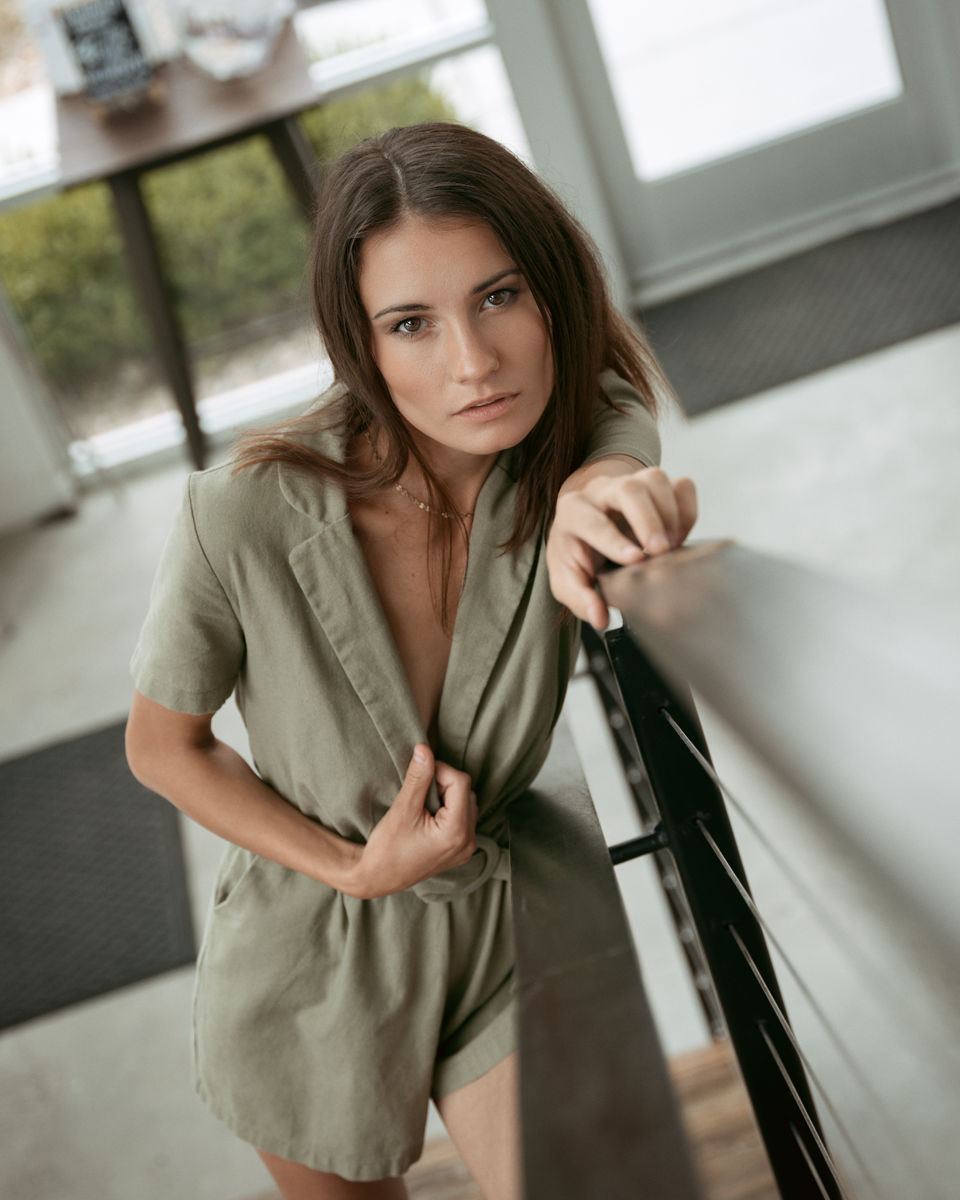
After taking a few photos at the coffee shop–onlookers taking it all in–we finally headed up to the mountains through rainy and dreary weather.
By the time we got to the location which is about a 40 minute drive, it started coming down real hard. Hard enough in fact that we ended up just staying in the truck for about a half hour until it stopped enough for us to not get entirely soaked.
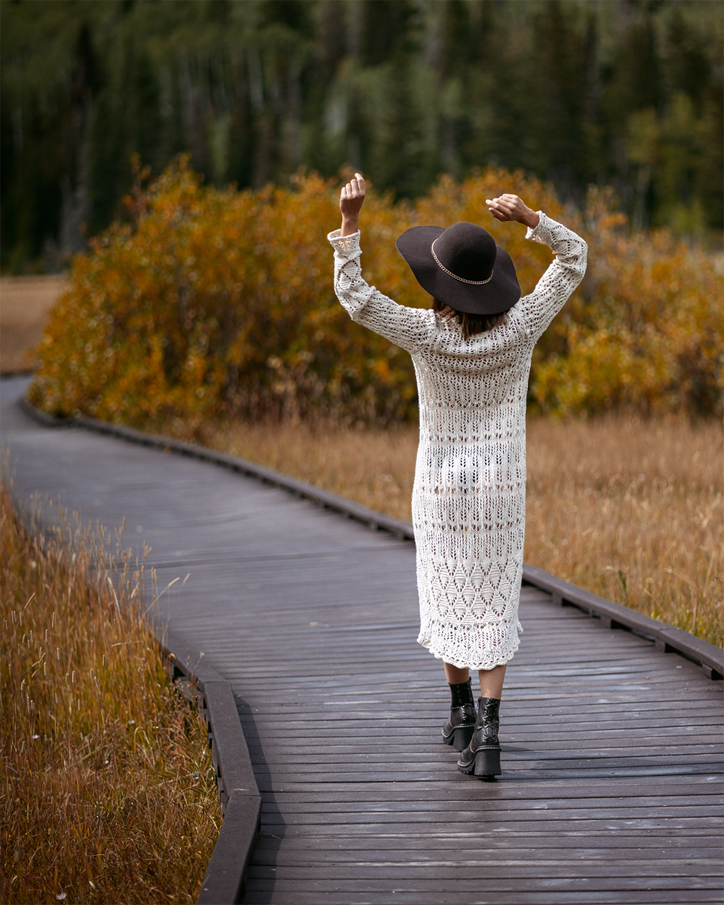
Once the weather cleared it turned beautiful quickly with fairly heavy cloud cover and some great intermittent light.
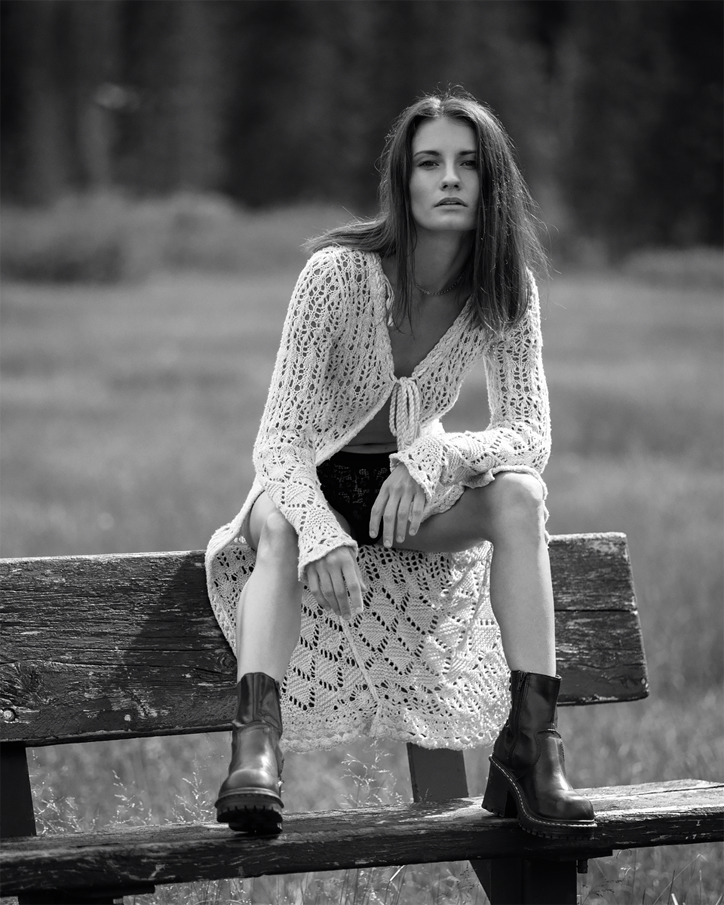
One of the challenges in quickly moving cloud cover is that the light is constantly changing. But patience pays. Take your time and the light will come. Just be ready to take the shot when it does.
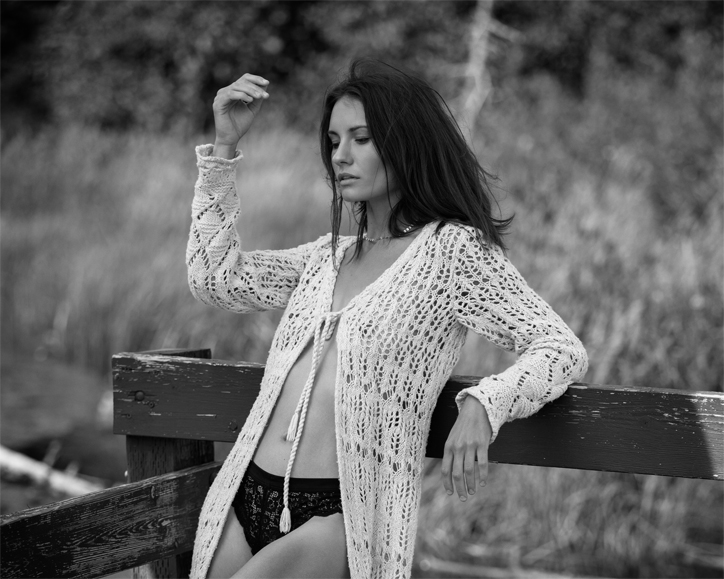
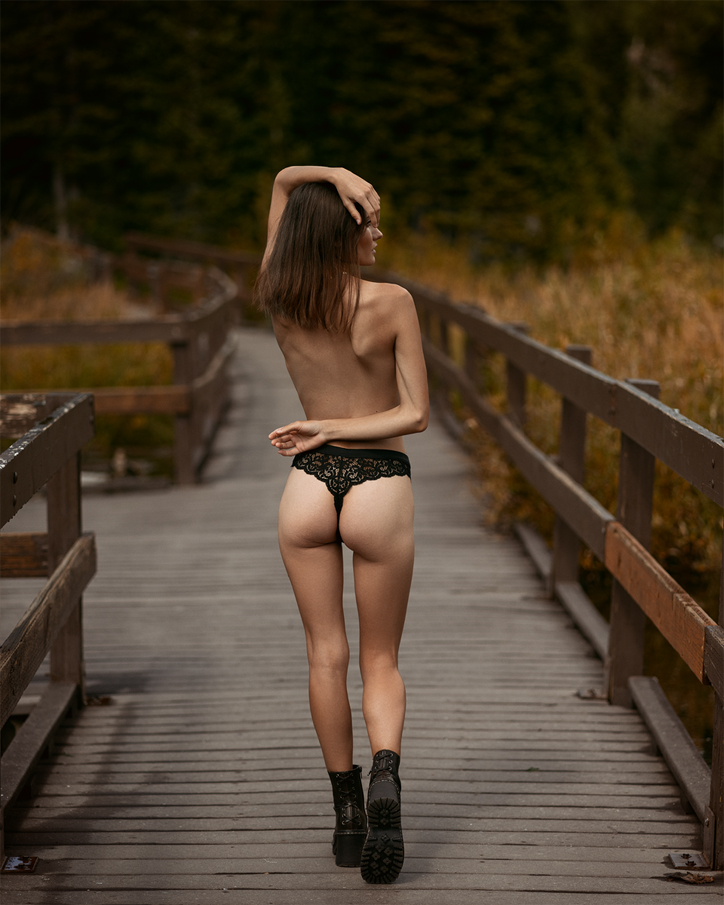
As Inna wandered across the bridge, we decided to wrap up this leg of the journey and head to another location. Besides, it was getting a little crowded.
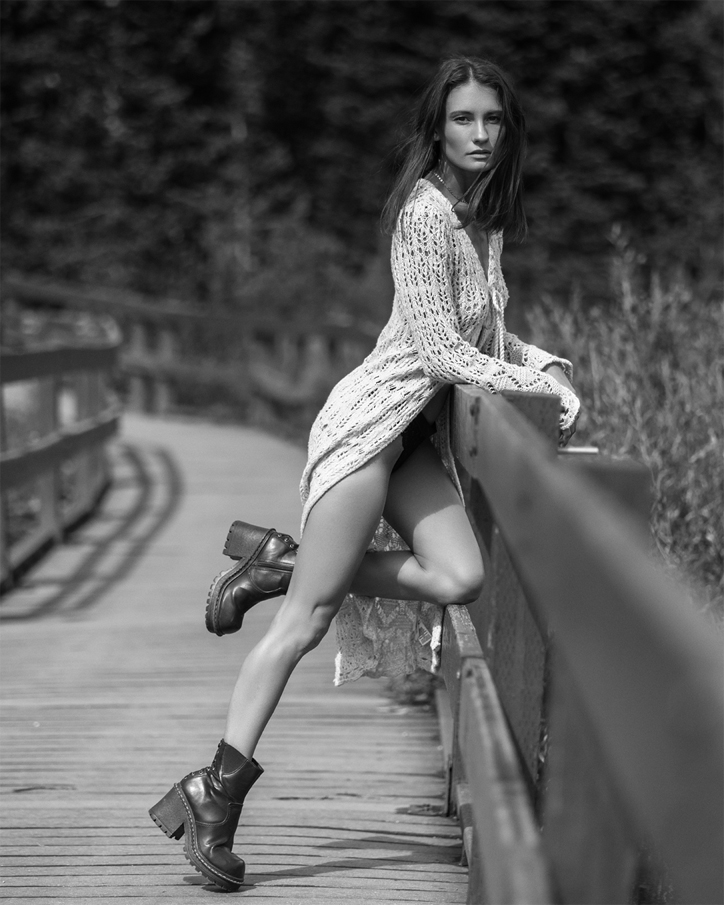
By the time the above shot was taken, the midday sun was coming out full force. A lot of photographers hate midday sun. Not me. I love it.
We loaded up and drove further up into the mountains. By this time the sun was pretty much directly overhead and I opted to use both a scrim and a reflector to help control it. Inna did a quick change, and we grabbed a bag full of clothes and headed out into an amazing meadow.
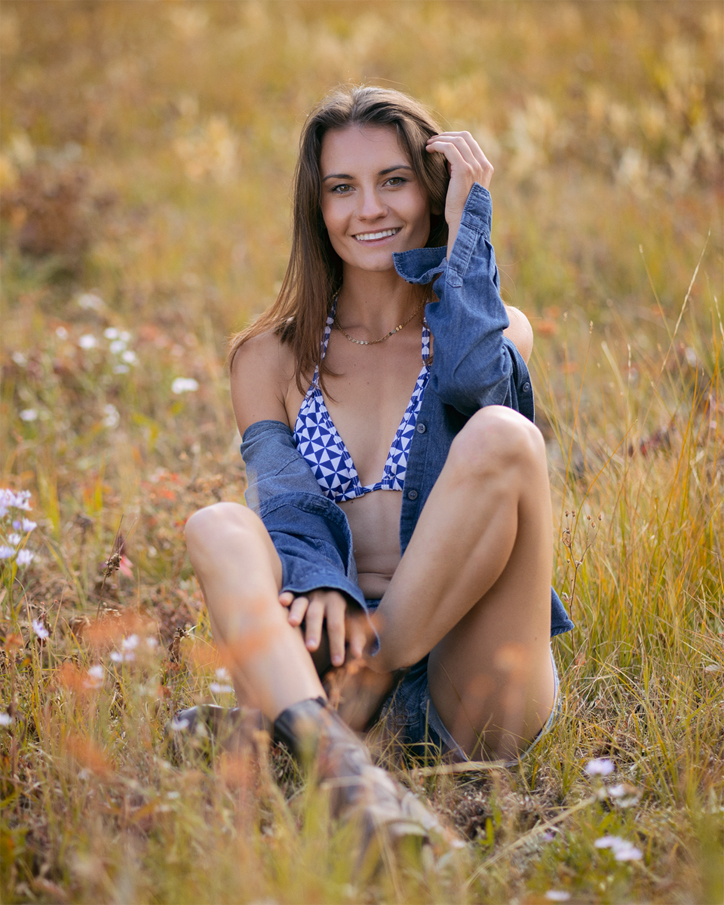
In case you can’t tell, I love shooting with an 85mm lens.
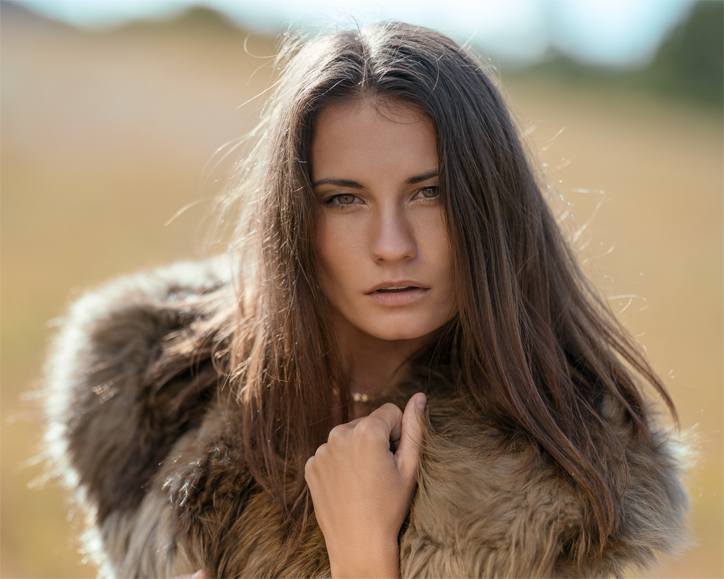
But nothing beats a 135mm lens for a shot like the one above. I love the wild child vibe that Inna has going here.
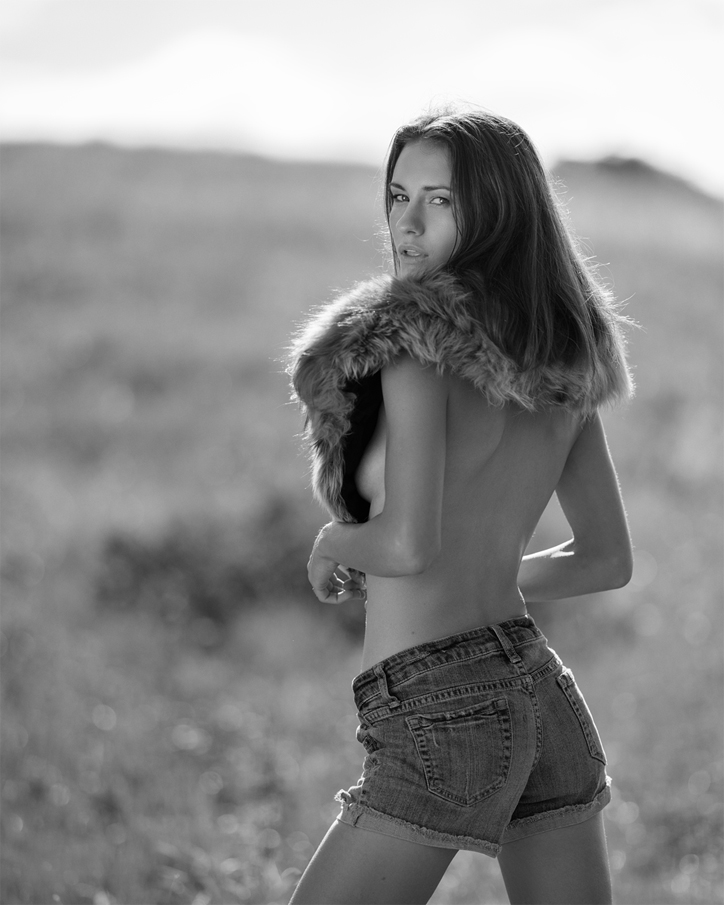
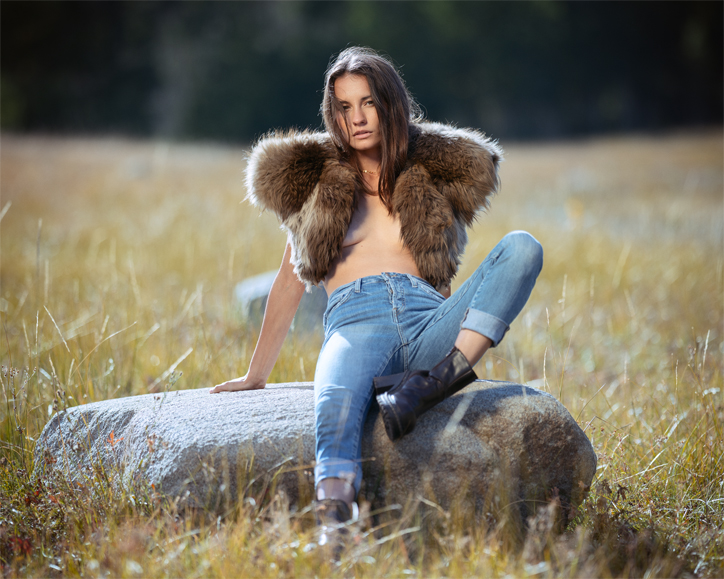
Time for another change-up.
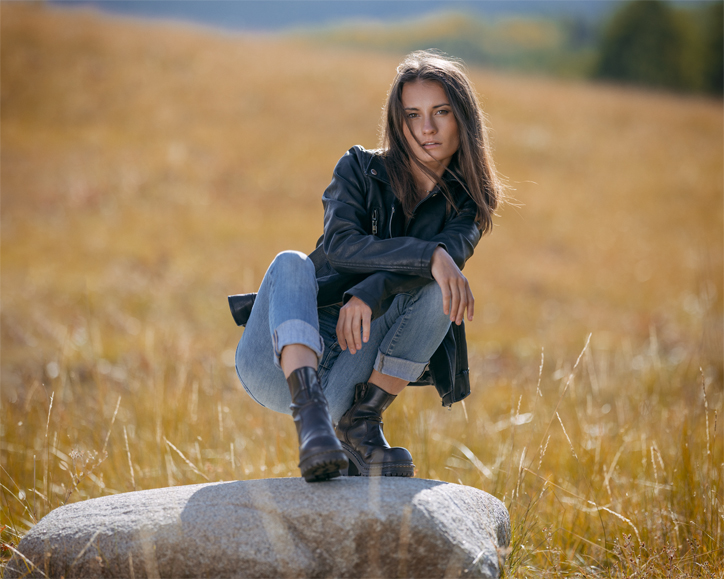
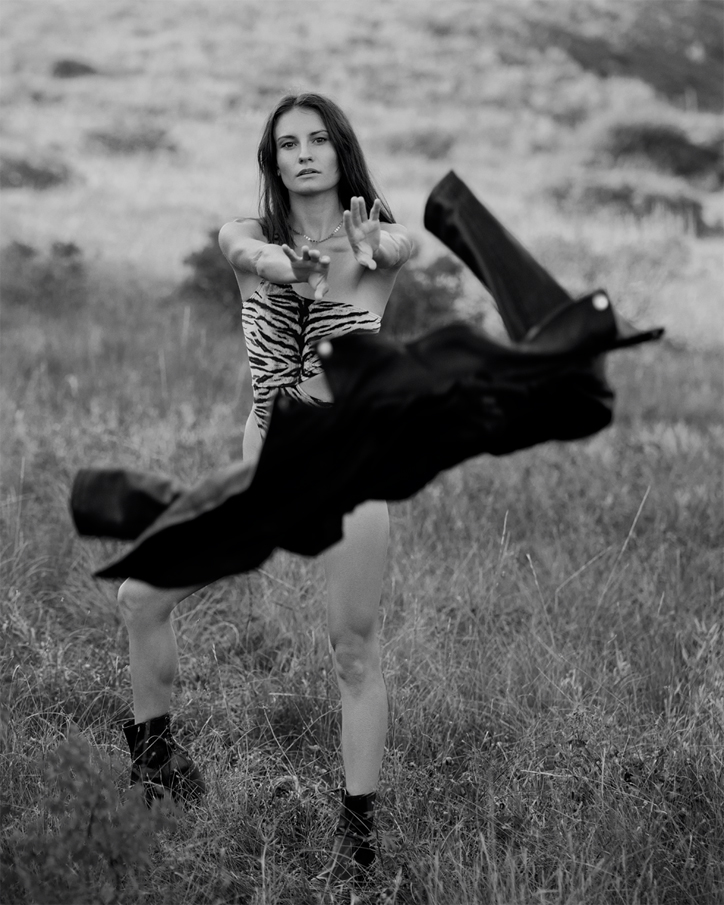
This is an example of having a good collaborative team on shoots. We were getting ready to call it a day and head back to the truck, but really wanted to get one more look in. We were all a little tired by now. Brant, my assistant, came up with an idea, “Why not have her throw her jacket at the camera?
Sounds awesome to me. Let’s do it. I’m always willing to listen to any ideas that someone on the team has.
The photo below is about as carefree as it gets.
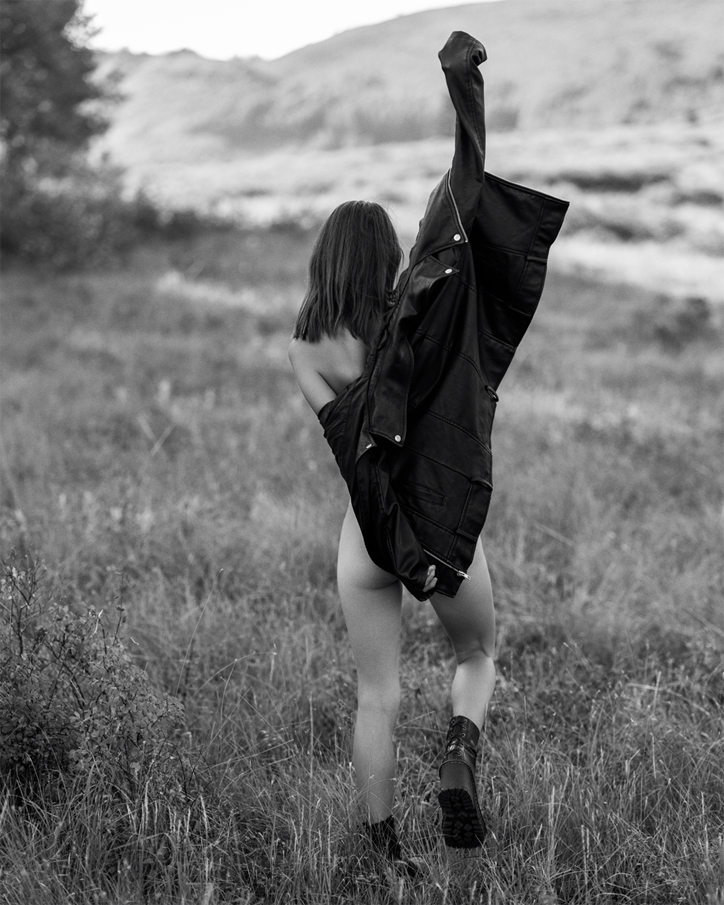
This (below) was the last shot I took of the day. Let’s go celebrate!
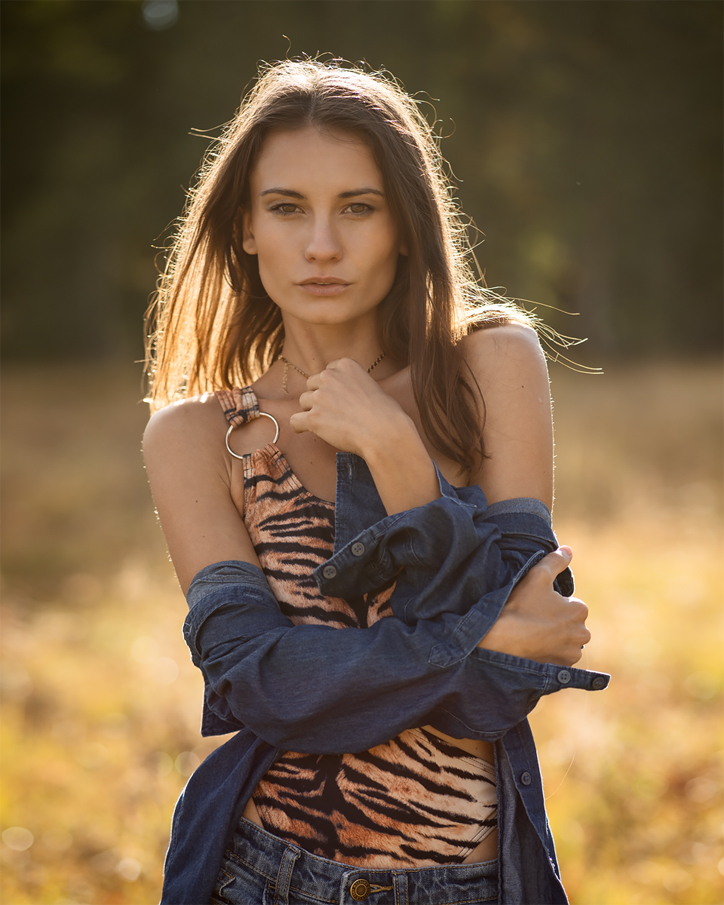
Model: Inna Taylor
Assistant: Brant Gibbons
Photography © Daniel Medley 2021
Gear used: Sony a7R IV, Sony 135mm G-Master, Sony 85mm 1.8, Large Lastolite 5 in 1 reflector, large scrim.
35 and Up! is an ongoing project of mine that I’ve been working on for a couple of years now. The 35 and Up! project features photographs of women who are 35 years of age and older. There are lots of reason why I love doing this project, but there are a couple main ones.
First: There is something about women at around 35 years old and older that sets them apart from most who are younger. It’s very difficult for me to quantify, but I can see it. There’s typically a confidence that comes with complete comfort in your skin because you’re at the age that it really is what it is. Typically, by about 35, in my experience, people are generally past the times when they’re trying to be something they’re not.
Not always, but usually.
And this is not to say that young women–or men for that matter–don’t have the capability for a certain je ne sais quoi, they absolutely do, but it’s usually something different.
Second: Casting calls for models 18-26 are a dime a dozen. Everybody and their uncle wants a model or models in the 18-26 age range. I don’t think models 35 and older get their just due. That’s my opinion.
Anyway, the following 35 and Up! participants appear in no particular order. I won’t disclose how old they are except that they are all over 35 and the are all stunning. Like I said, I love this project.
Tanya isn’t a “model.” She’s just a dear friend who I love taking photos of.
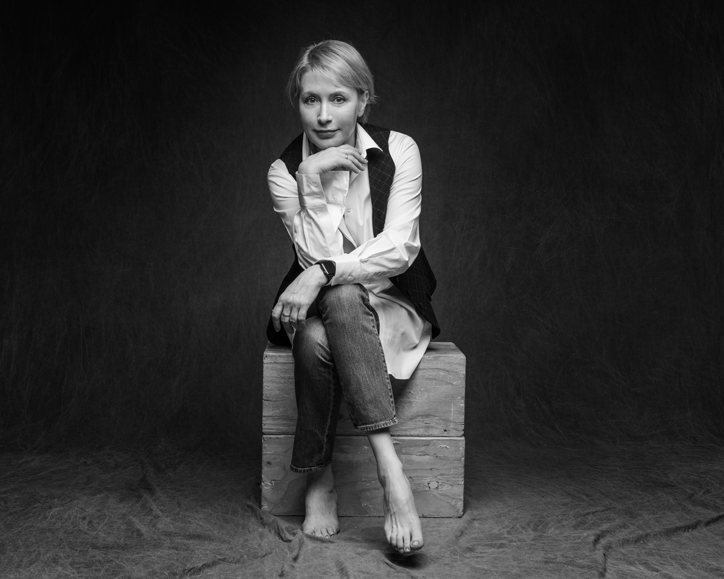
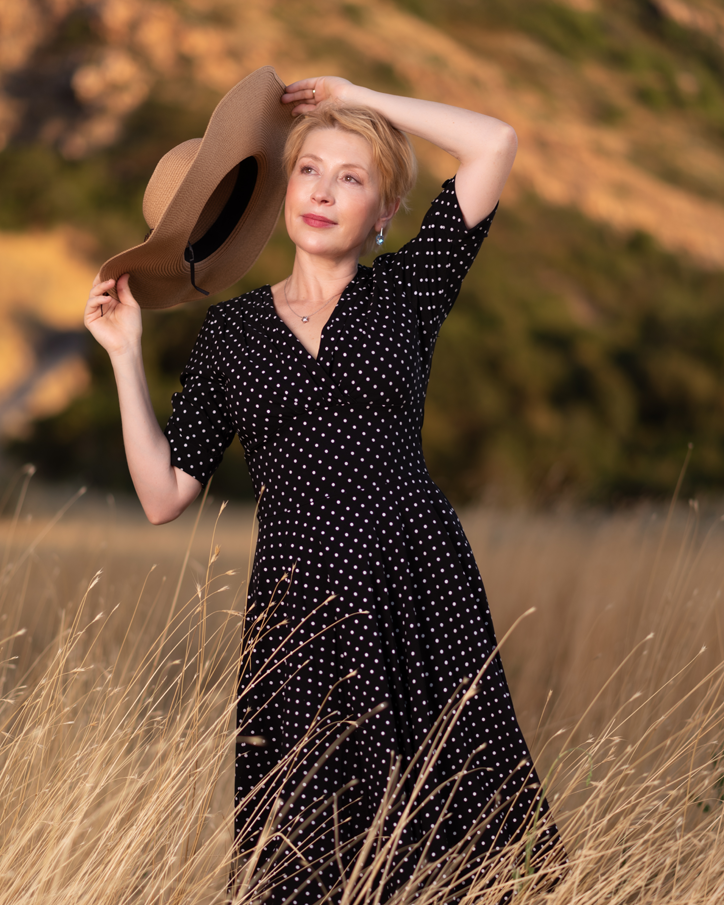
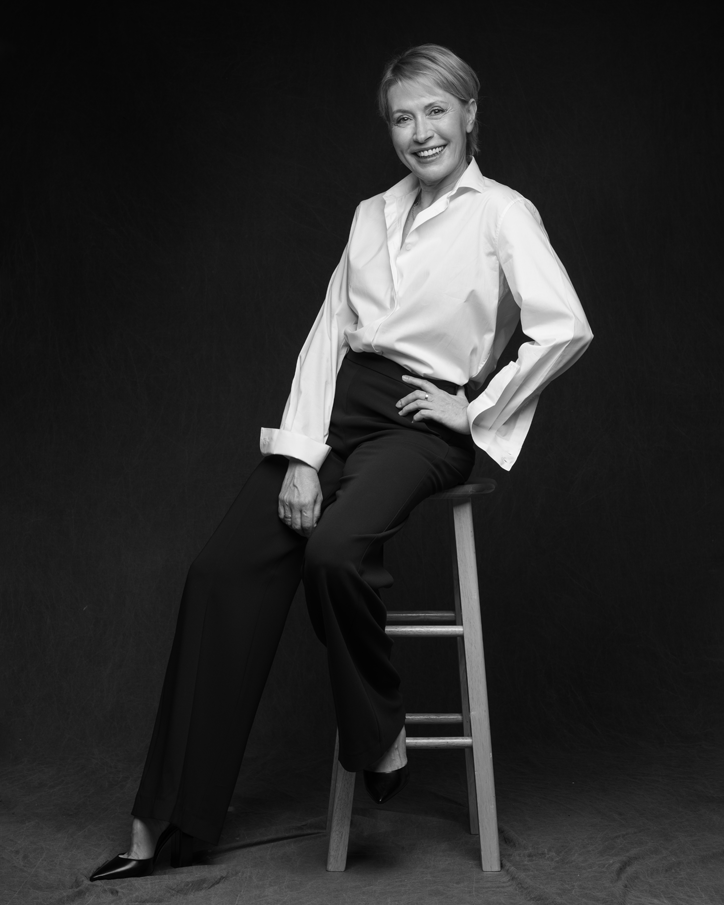
I met Chelle a couple of years ago and we’ve done a few shoots together. And, of course, she rocks the 35 and Up!
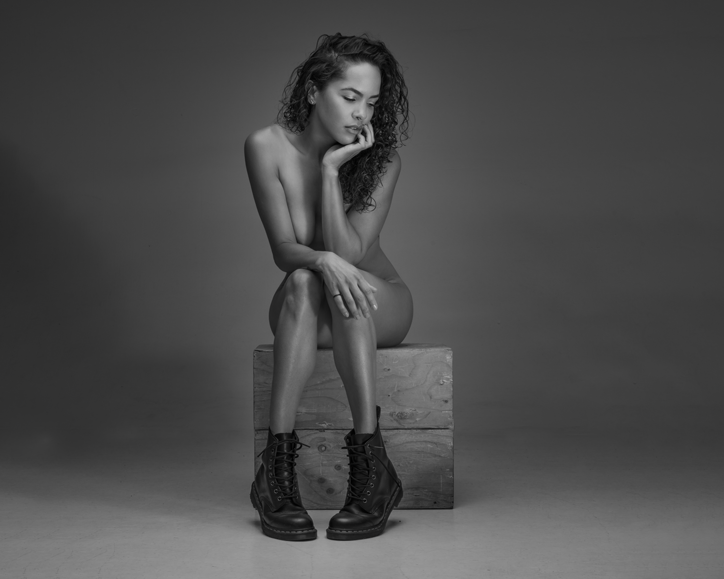
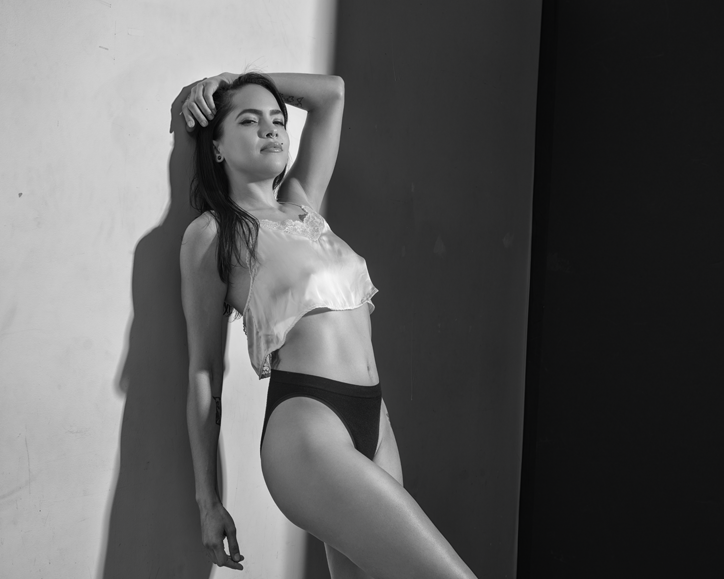
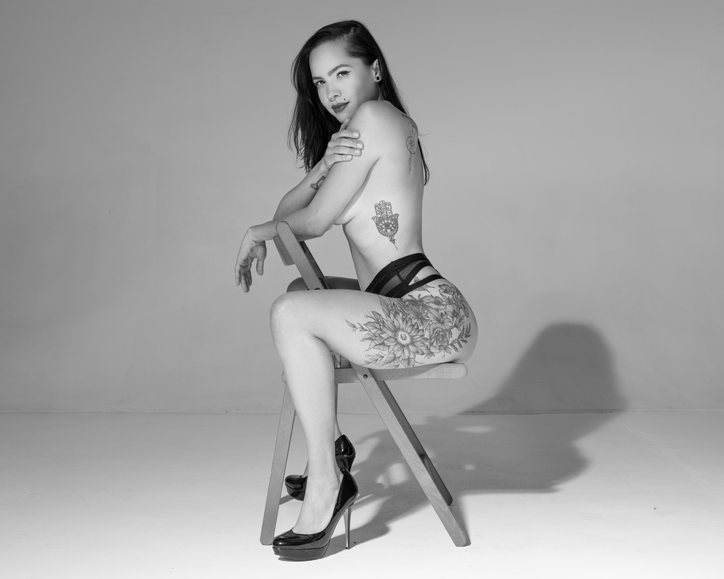
I put the word out that I was looking for some models for the project and Kirsty stepped up.
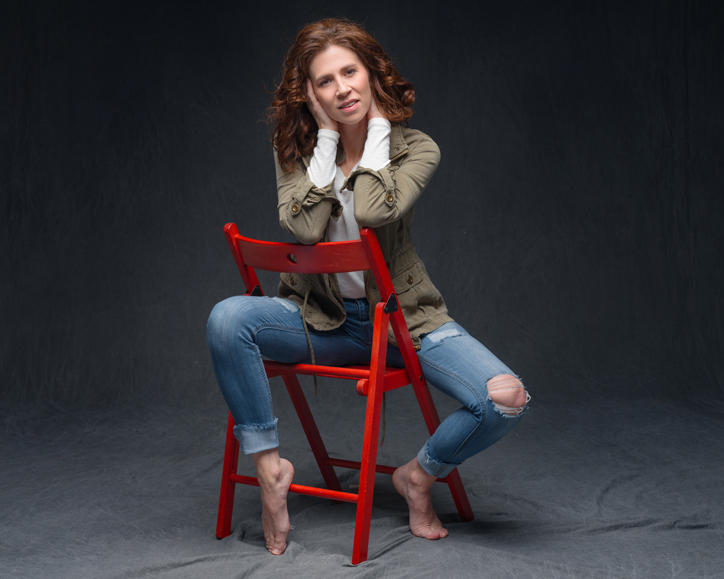
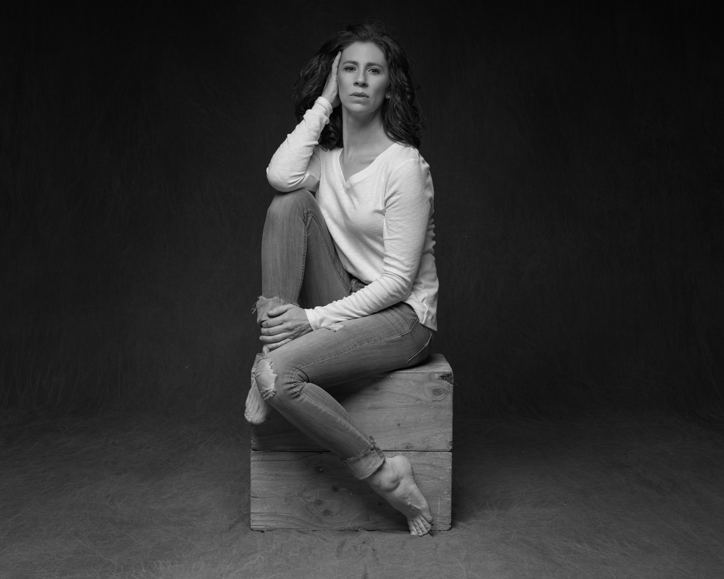
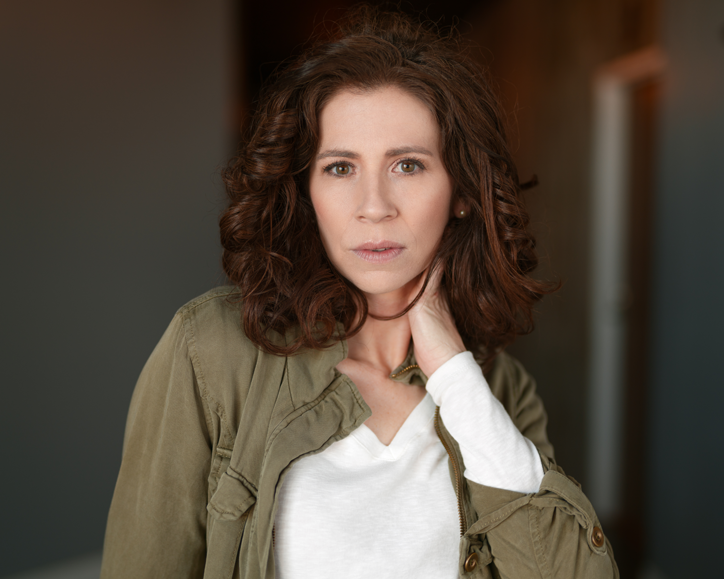
Eliana made it to the studio and blessed me with some amazing shots.
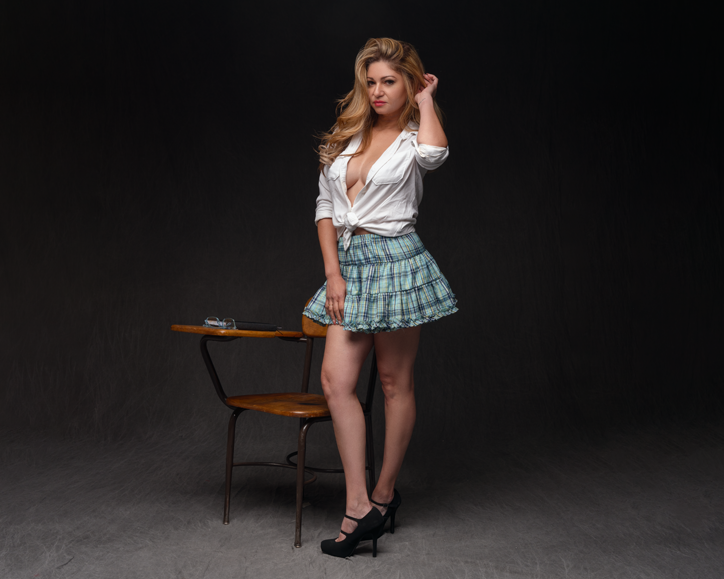
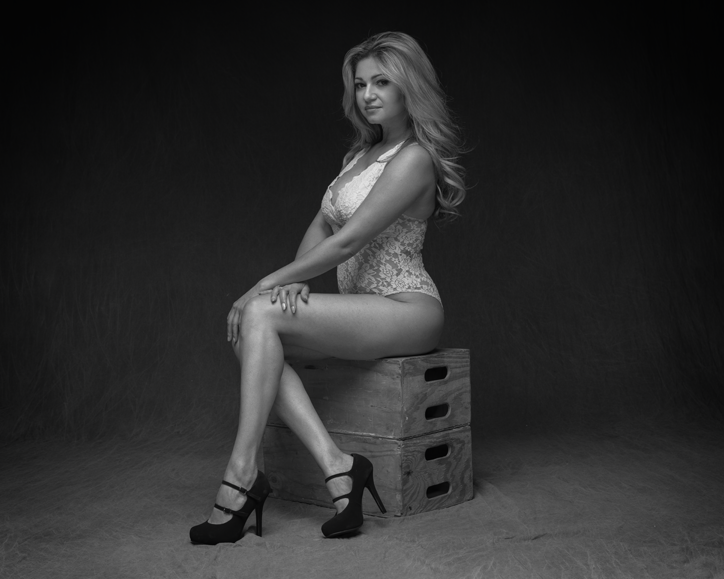
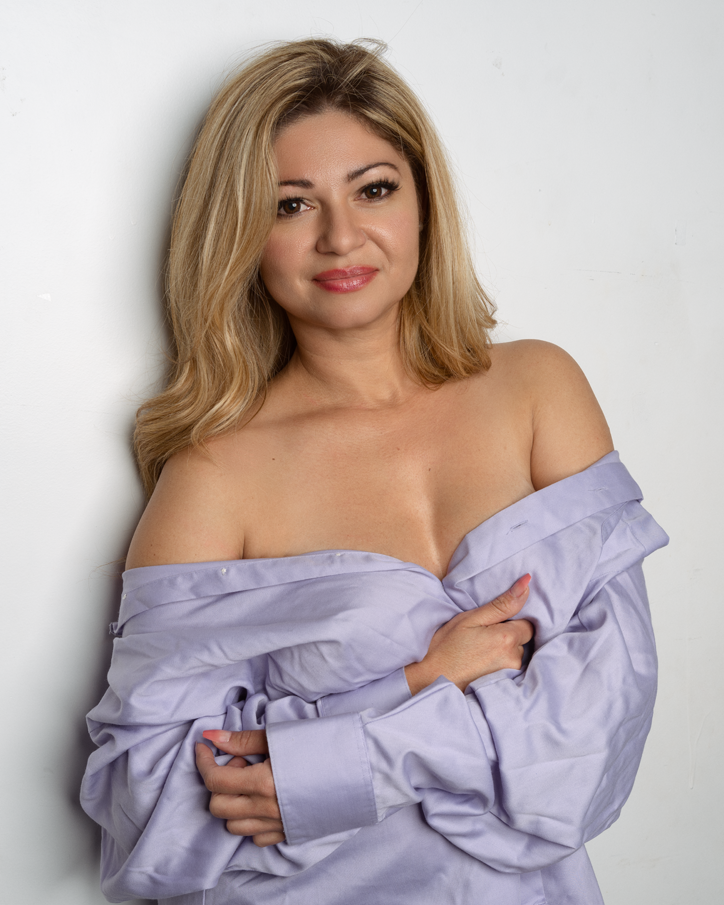
Emily came in to the studio on extremely short notice. I think I had a shoot reschedule and I posted on Facebook that I was looking for someone to come to mess around with lighting.
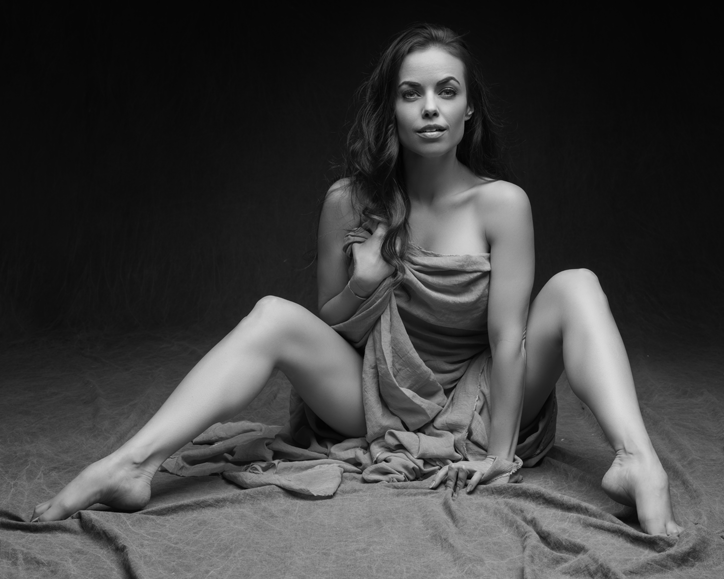
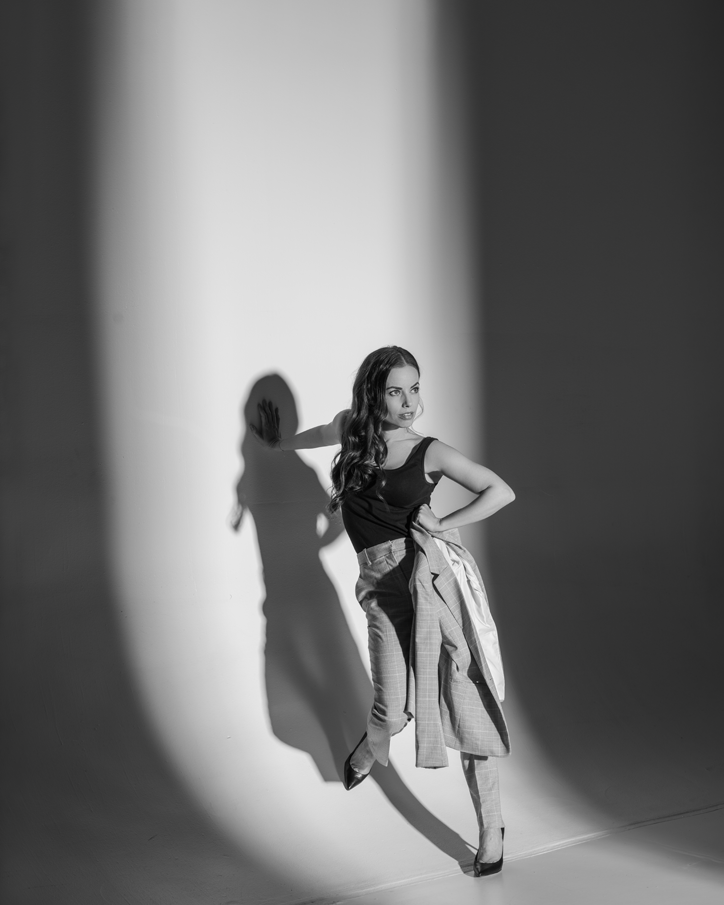
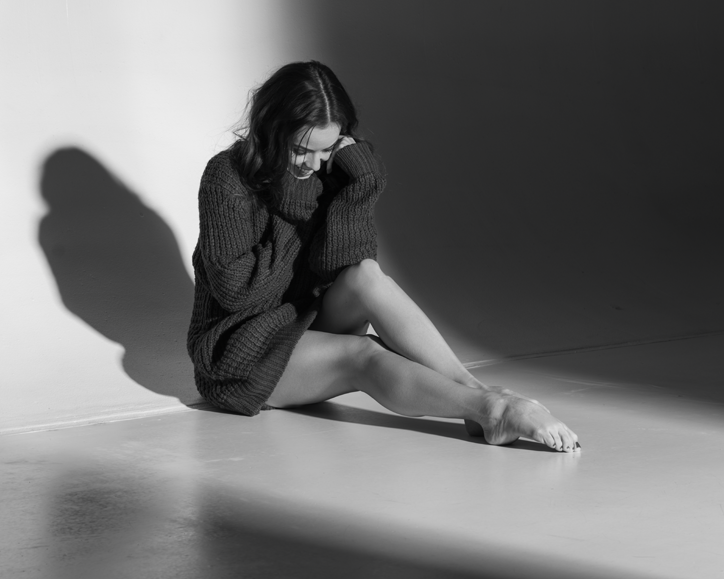
Melody’s vibe is edgier than a switchblade knife.
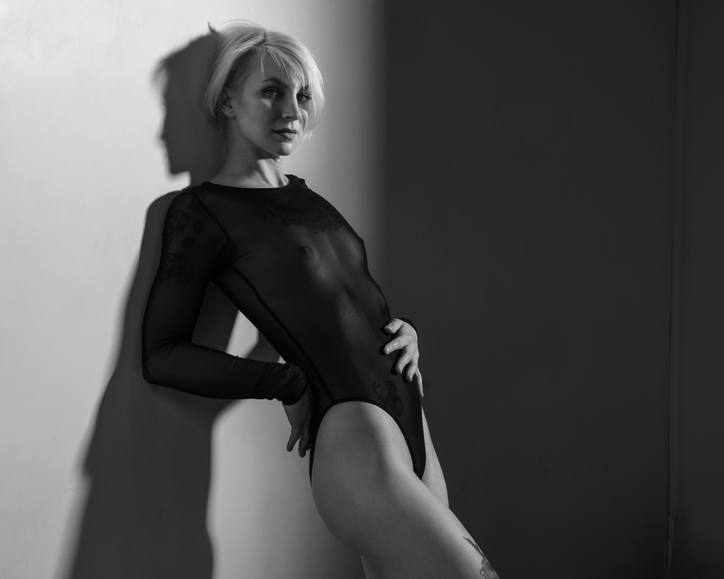
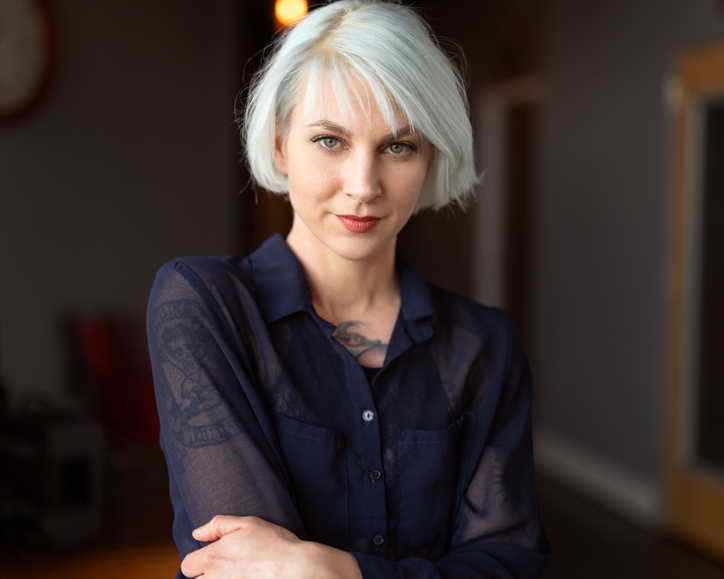
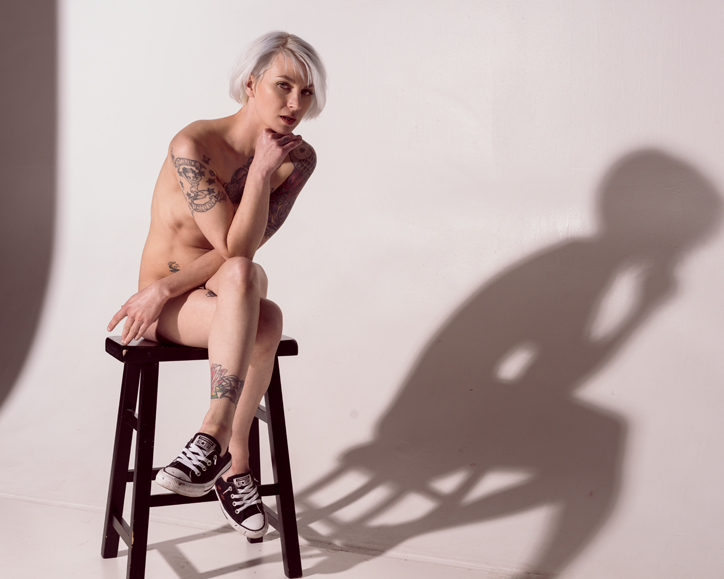
Rachelle. Look at her!
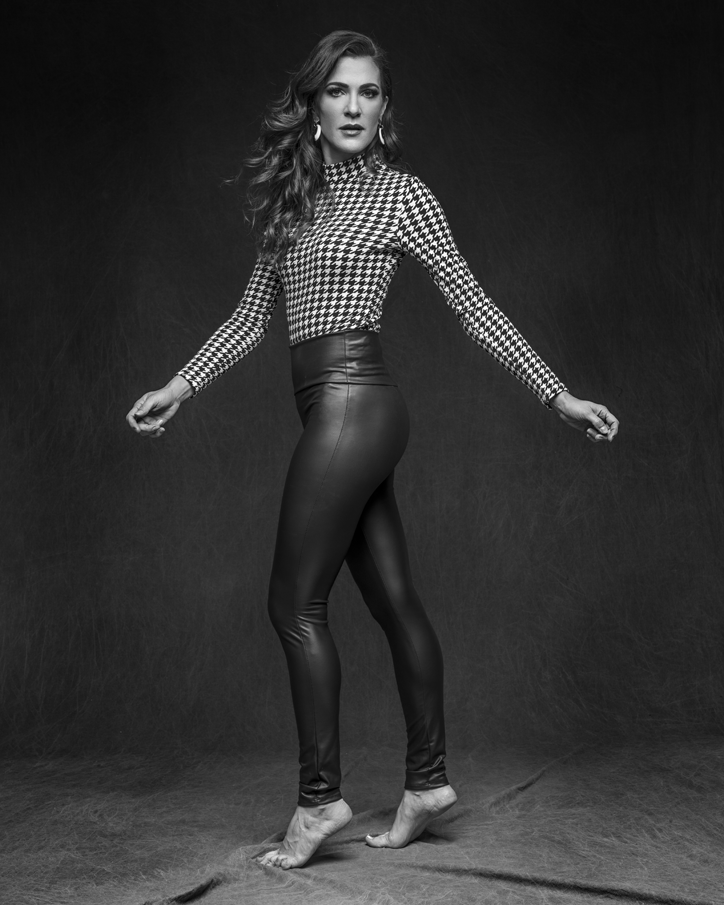
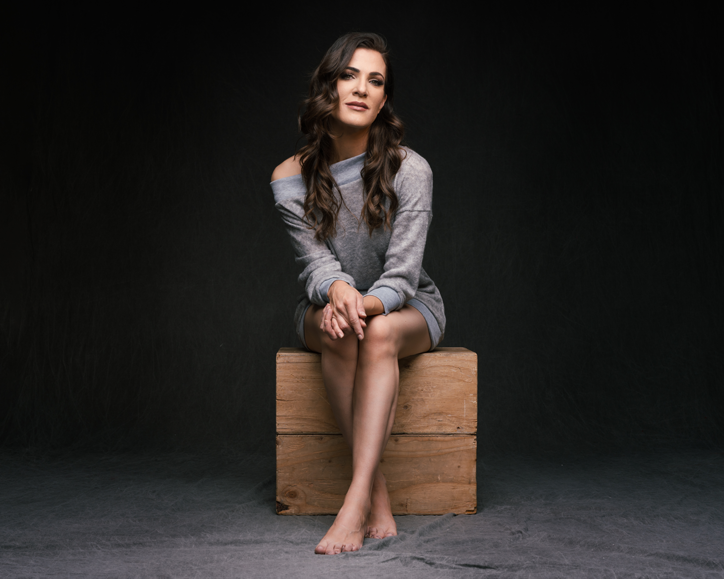
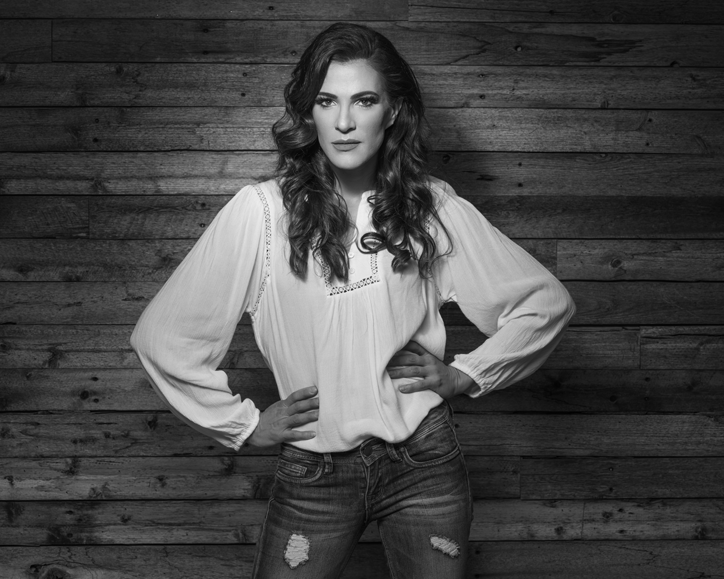
Molly likes to say she’s changing beauty standards one gray hair at a time. Yep!
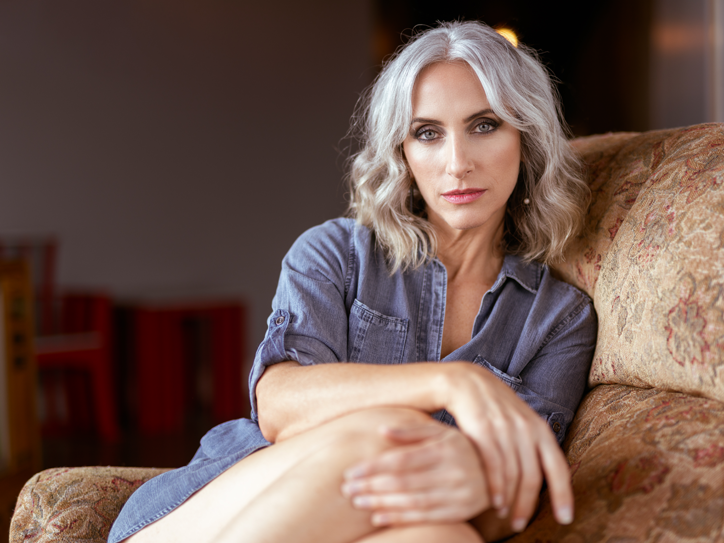
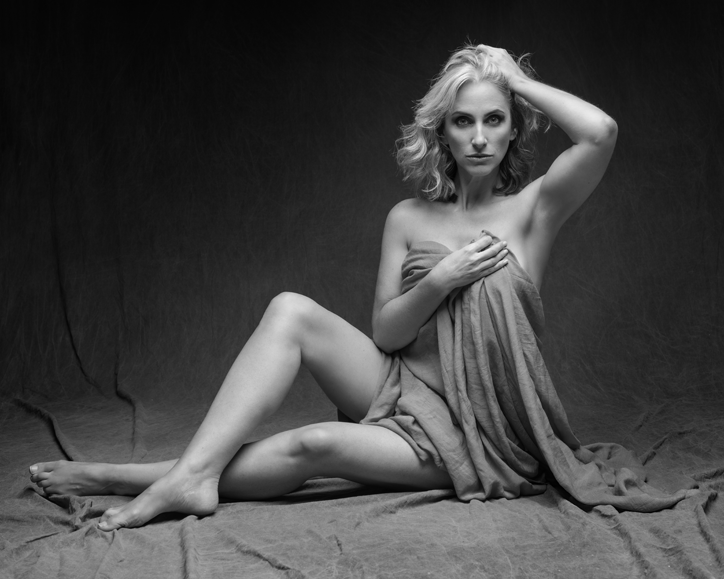
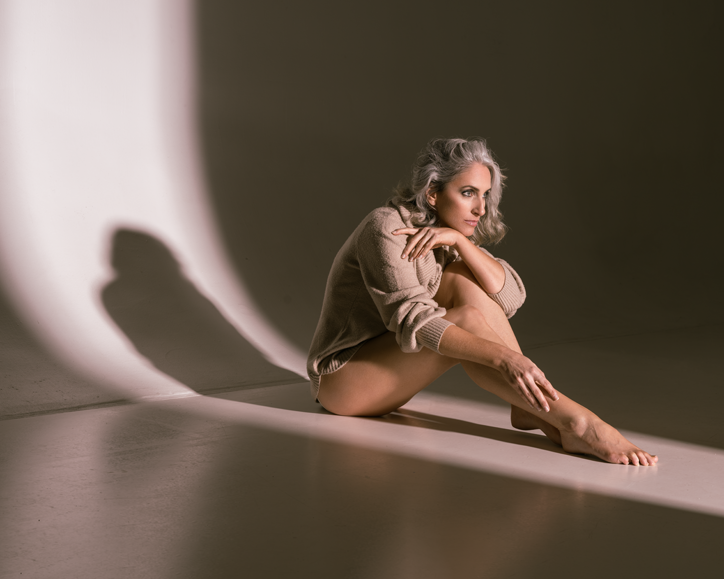
The 35 and Up1 project is an ongoing, never ending project. As I add more amazing women to it, I’ll put up more blogs to feature them.
And remember, when it comes to beauty, it’s not just a young person’s game.
This lifestyle editorial features the amazing Vittoria Hiltbrunn. The theme of the whole shoot was “road trip to the desert.” We spent the better part of a day and a couple hundred miles driving from the city making our way through much of Utah’s West Desert and finally ended up at the Little Sahara Sand Dunes.
I want to mention that it’s simply not possible to do a shoot like this and not be able to take photos in any lighting condition. You To hell with “golden hour!” I’ve always found it puzzling that people relegate themselves to be a slave to an hour or so at either end of the day to make photos. Don’t do that. Learn how to use flash, scrims, making some place work no matter what time of day, whatever. In other words, be able to take photos in whatever conditions you find yourself in.
We started the adventure at noon in the lobby of my studio because I love the mid-day light there. Plus it’s a great way to break the ice so to speak.
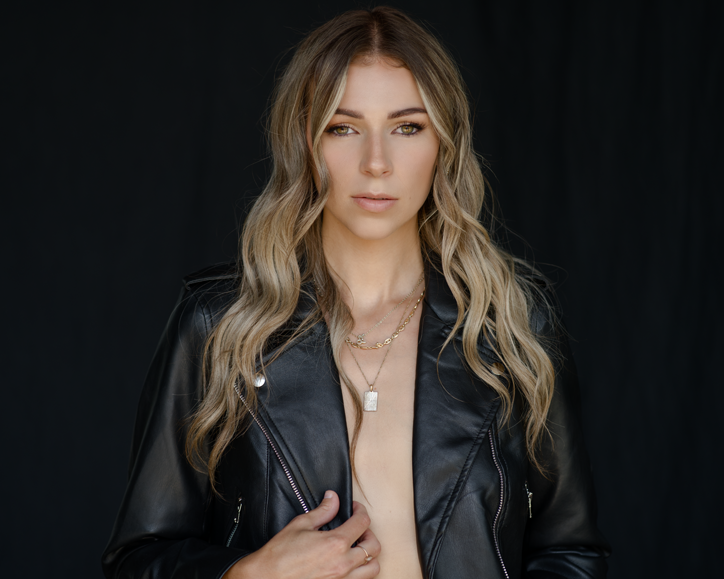
A quick change and another lobby shot. This one using the awesome Sigma 24-70 Art 2.8 lens.
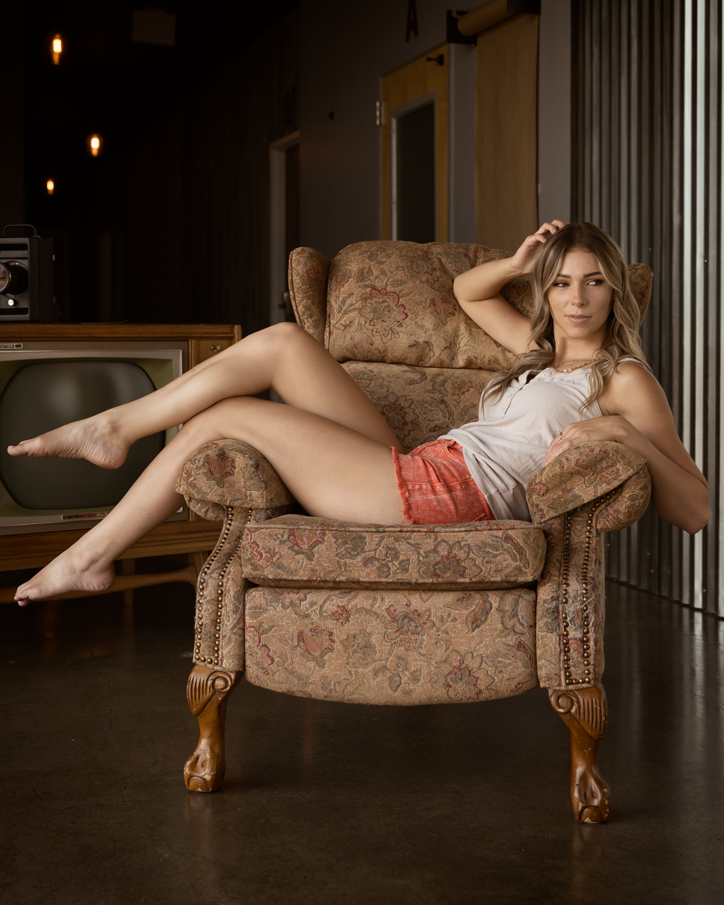
After a few shots in the lobby of the studio we drove to a coffee shop before hitting the road. The coffee shop has some huge west facing windows that throw some amazing light into the common area.
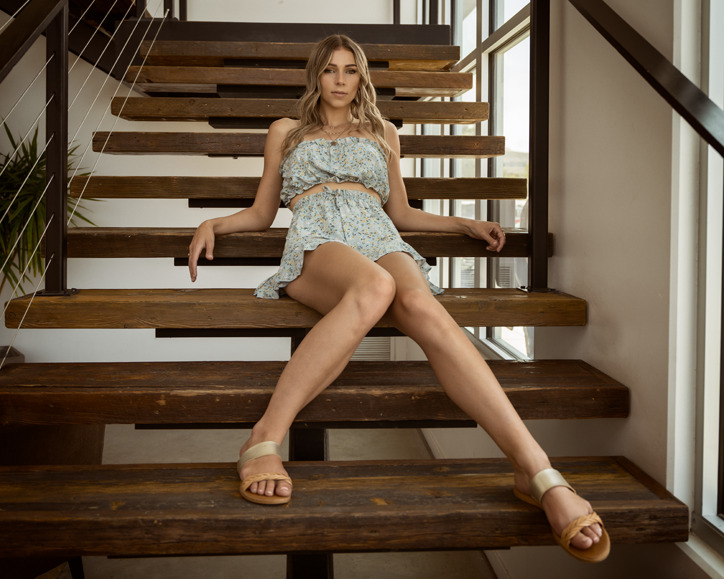
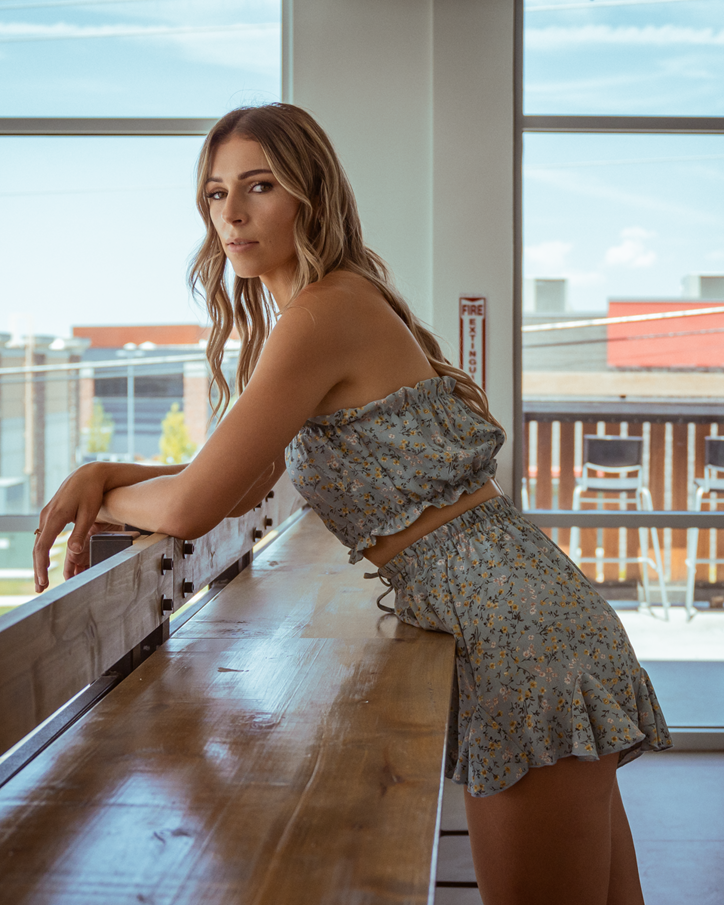
After our coffee, we hit the road in earnest traveling south for several miles then cut off of the freeway heading into Utah’s West Desert. Our first stop was the tiny town of Goshen, Utah. The only reason you even notice this little place is because the posted speed limit slows a bit.
The following photos taken with a Sigma 50mm 1.4 Art.
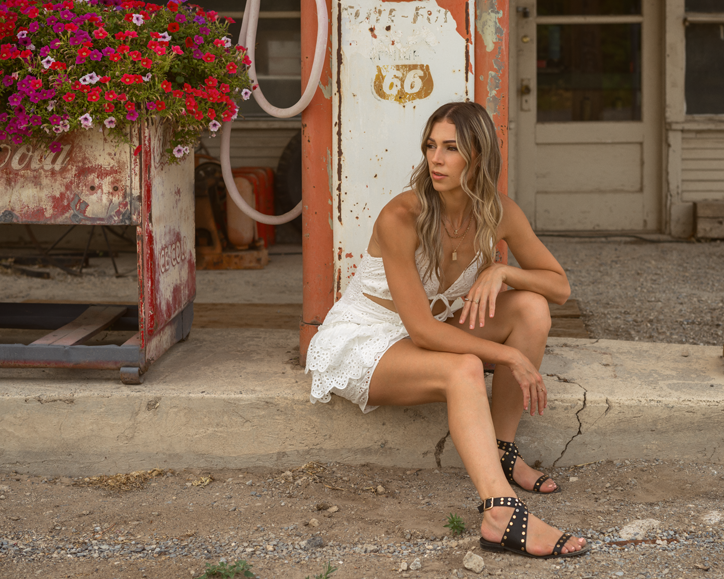
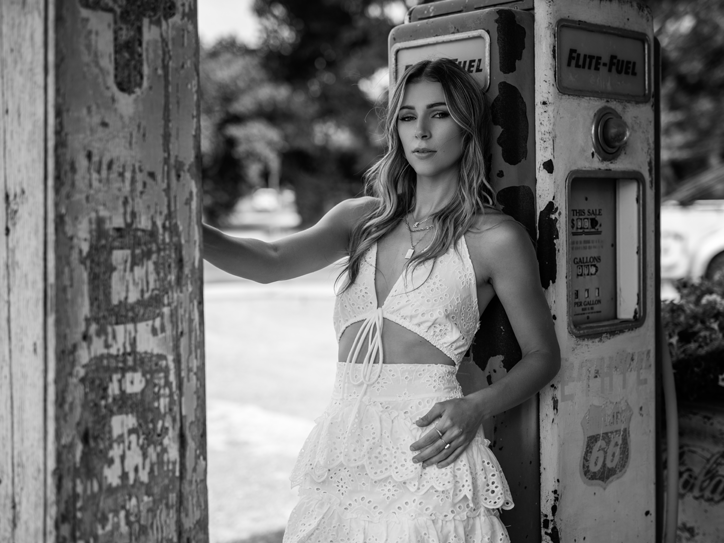
The whole vibe of this extinct roadside gas station was pretty amazing.
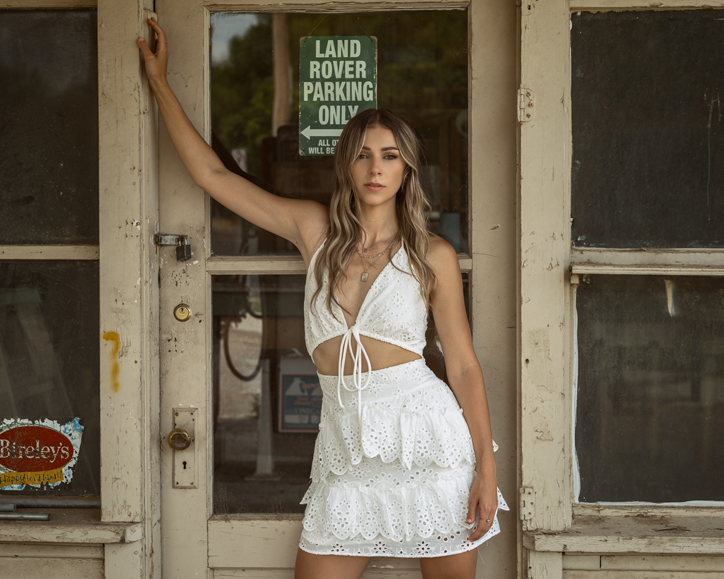
Continuing further west, we hit a little wide spot in the road called Elberta.
A friend of mine looked at the photo below and commented, “I can almost hear the wind blowing, the door hinges squeaking as the doors bang in the background.”
Yes, so can I.
On this shot I did use a tiny bit of fill flash from camera right. The lighting conditions were all over the place with clouds coming and going.
Also, I’m using the Sony 85mm 1.8, one of the best sub $600 lenses there is. It’s absolutely a beast of a lens for any price point.
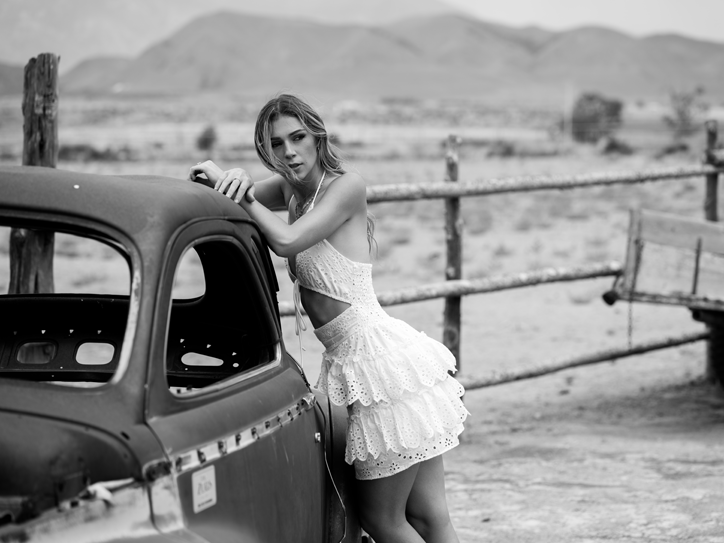
If you find an old broken down motorcycle, of course you integrate it into a photo.
Again, a tiny bit of fill flash from camera right.
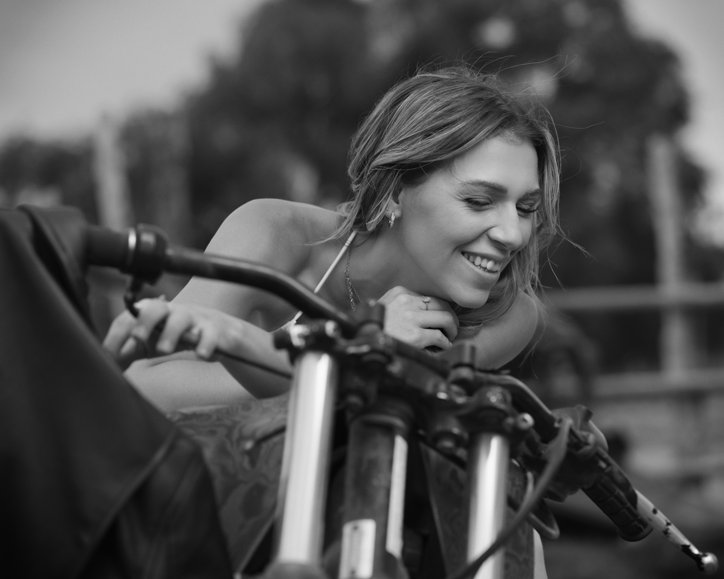
After we finished up in this cool little location, we packed it up and continued west, eventually arriving at the mining town of Eureka. I kid you not. A mining town called Eureka.
Vittoria changed it up and we found this great little stairway alley. It’s amazing the cool locations you can find just about any place.
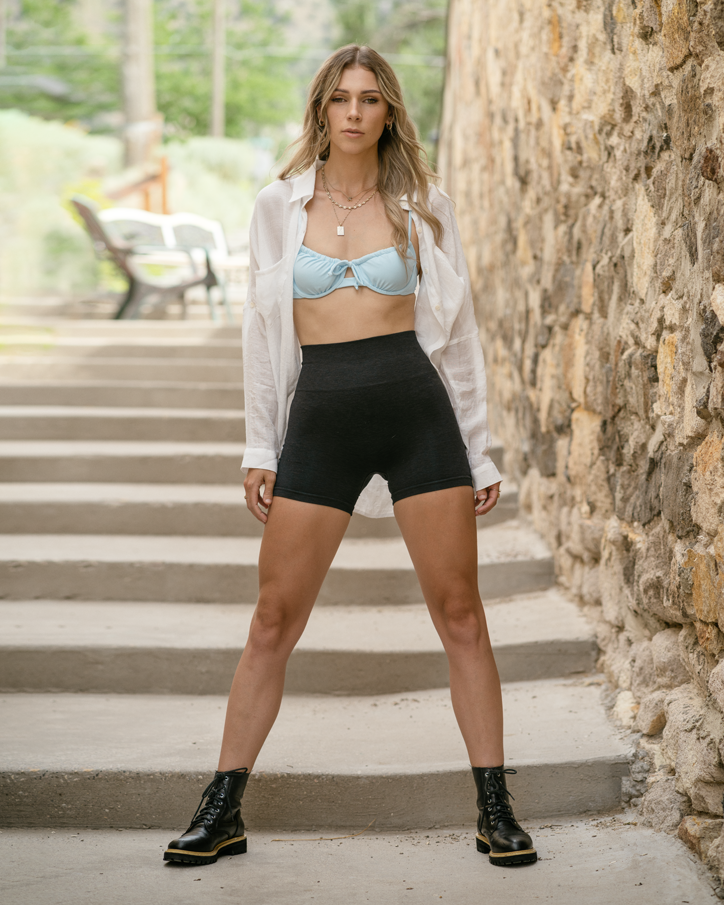
Looking around, what did we find? An awesome door frame.
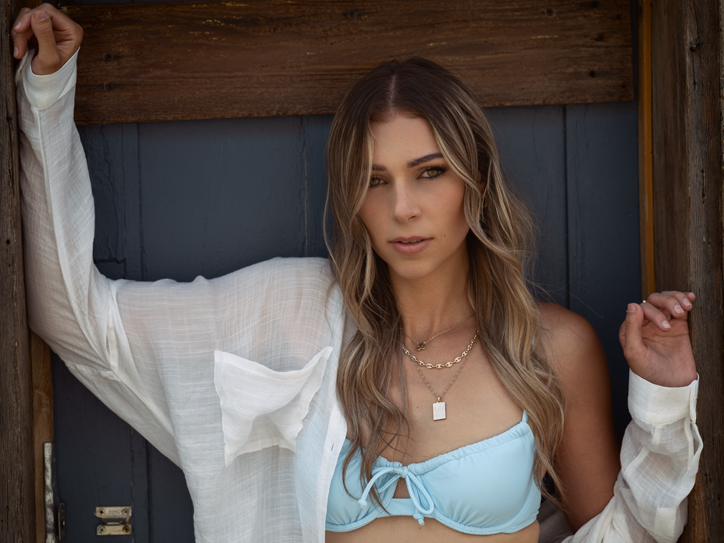
After the mighty town of Eureka, we headed to the final destination; the Little Sahara Recreation Area.
Pro tip: If you ever decide to shoot out at Little Sahara, do it on a Sunday. Any other day of the week it’s jammed with ATVs, motorcycles, and campers. On Sunday it’s generally nearly empty.
Vittoria changed her clothes, and Angela who was pulling assistant duties this day brushed sand from her bum. Of course I caught the moment. To be honest, without Angela, the whole day would have been much more difficult.
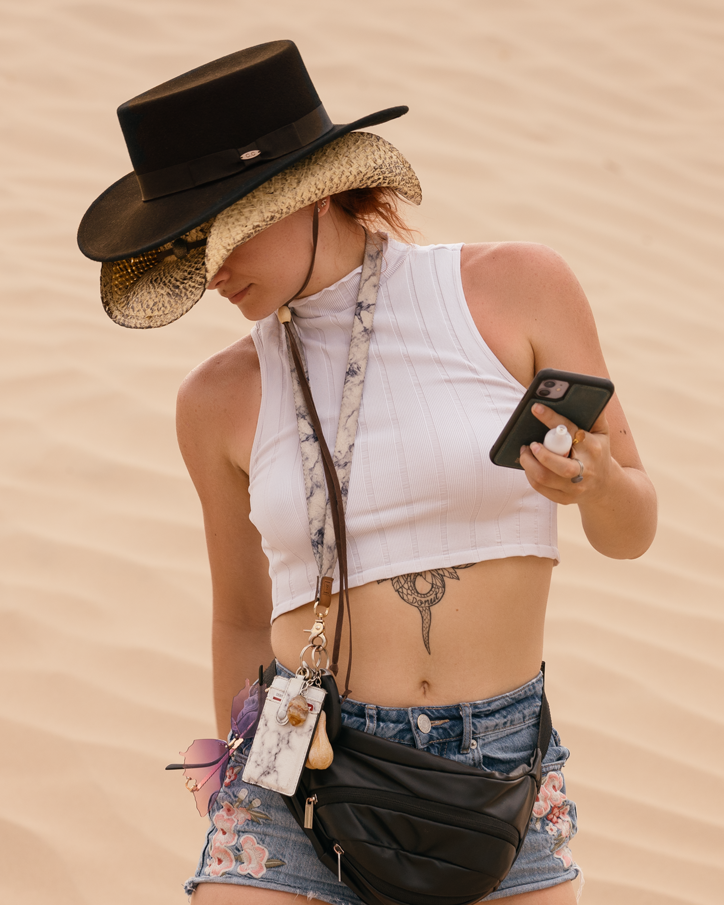
Vittoria changed into a dress and we took off across the sand dunes. There’s no way around it, she just rocks these shots.
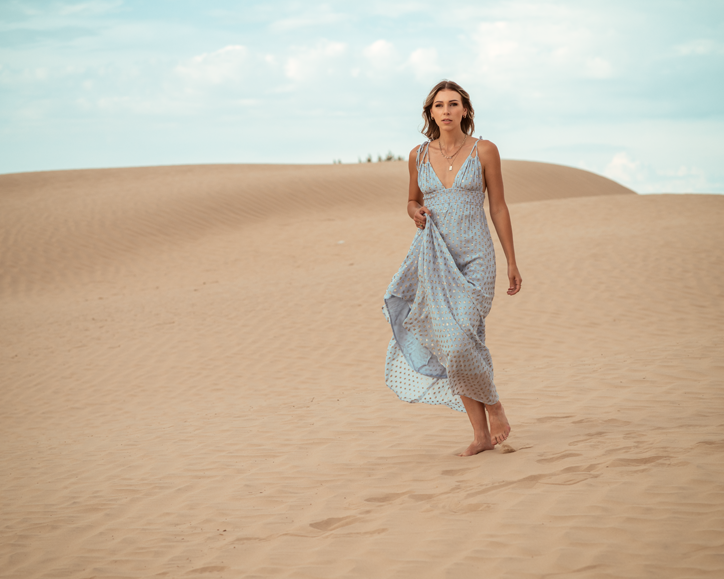
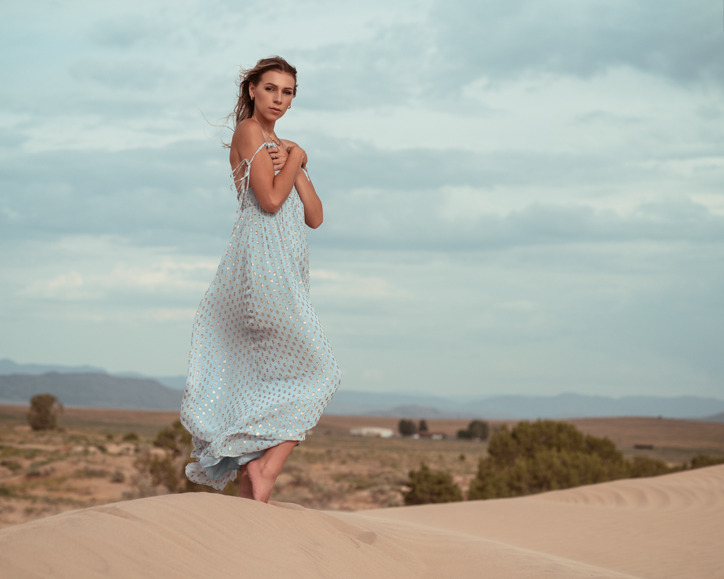
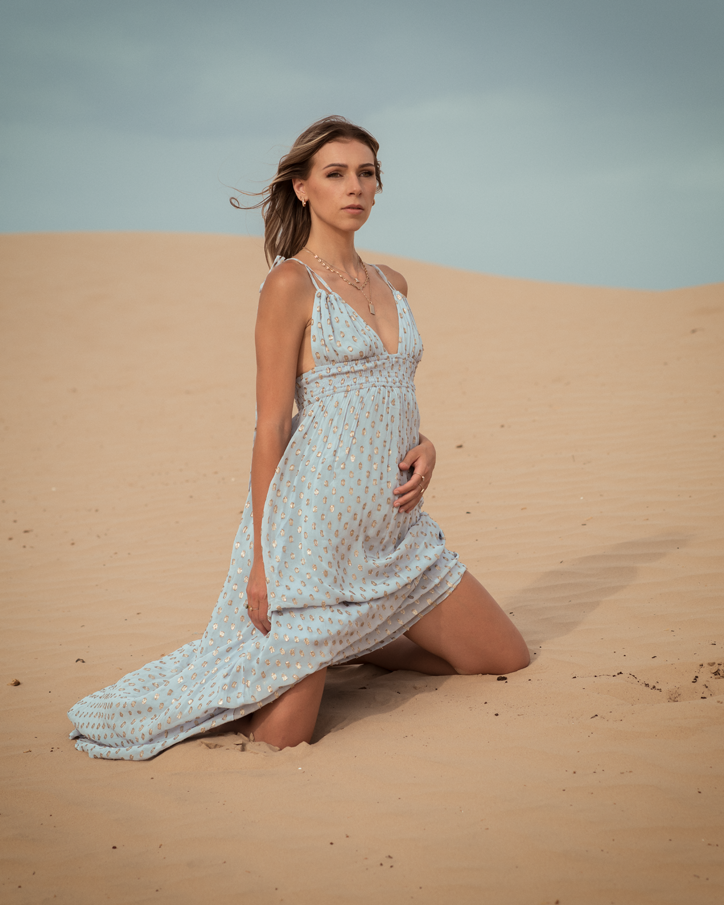
It was at this point that Vittoria changed into a different outfit and I changed lenses to a Sony 135 1.8 GM.
The shorts and top combo are perfect for the desert vibe:
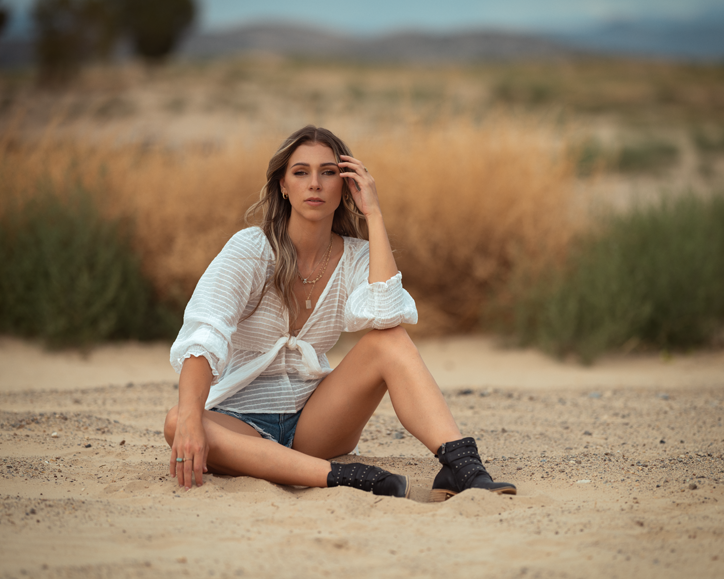
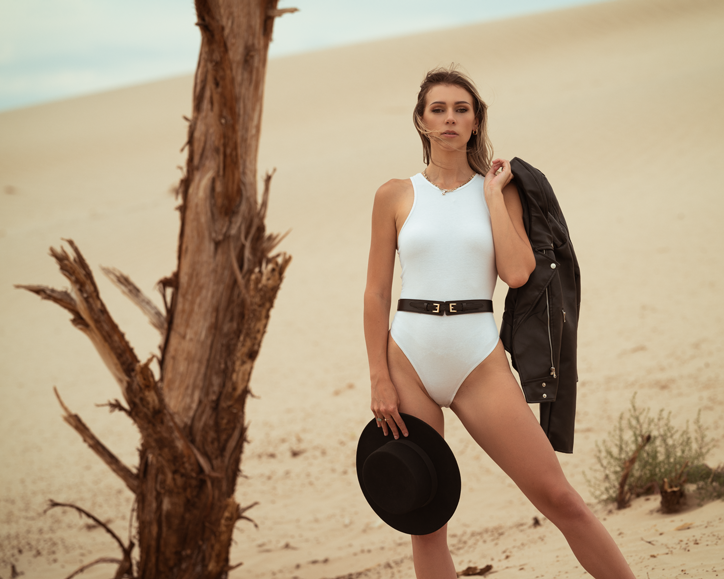
And finally, one last look before calling a wrap:
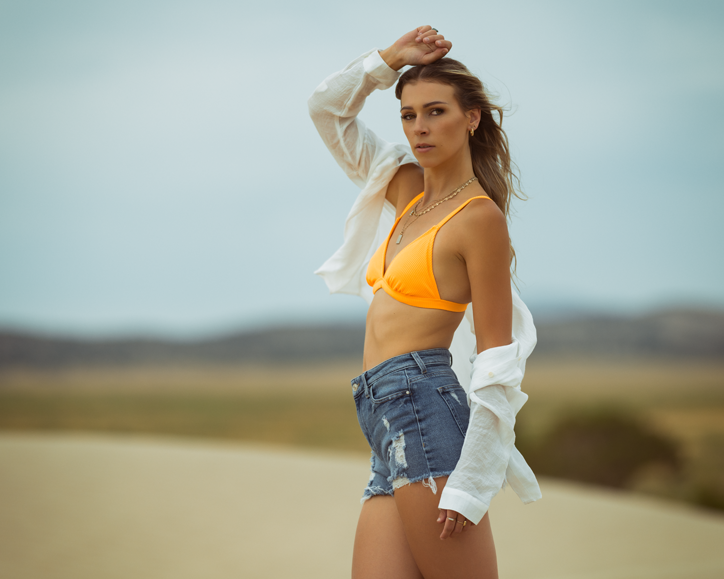
At this it was time to load up, call it a day, and head back home.
I just have to say that Vittoria was amazing and a huge pleasure to work with.
Model: Vittoria Hiltbrunn.
Assistant: Angela X. A huge and giant shoutout to her.
Gear used: Sony a7R4, Sony 85mm 1.8, Sony 135mm 1.8GM, Sigma 24-70 2.8 Art, Sigma 50mm 1.4 Art. Godox AD600Pro with a 28 inch octa.